
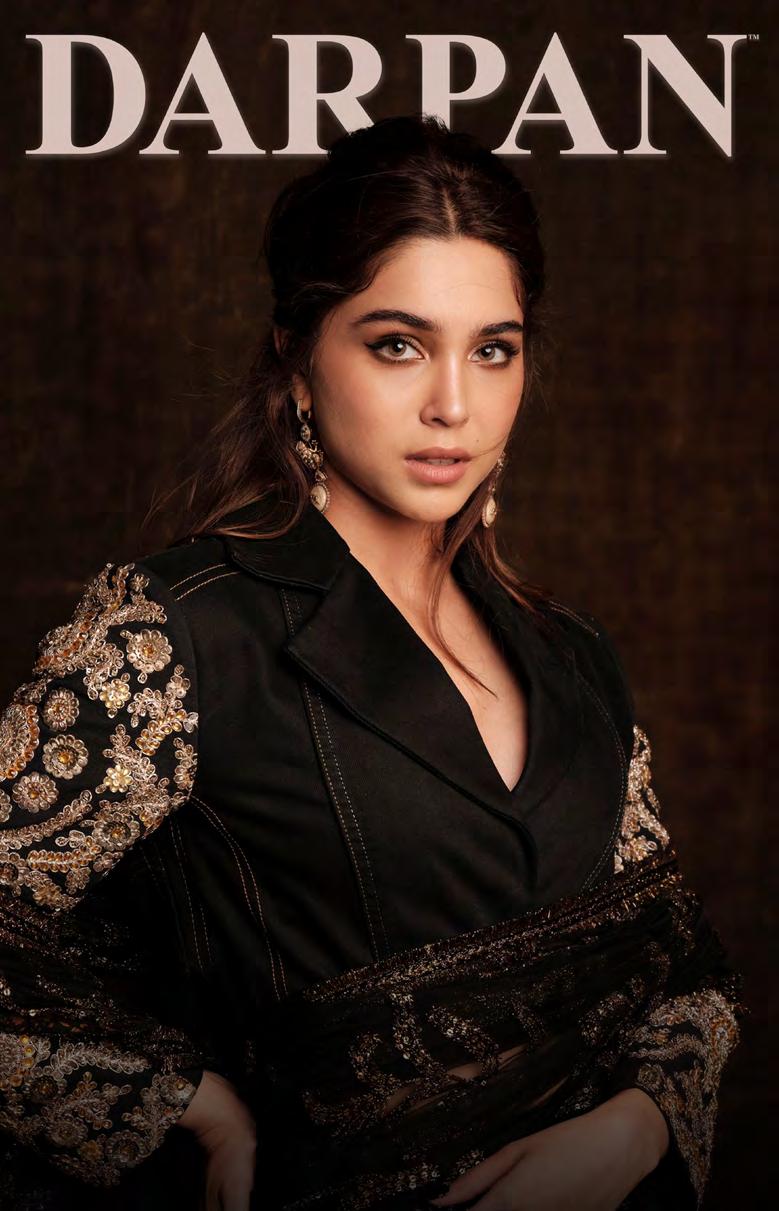


































06 Dual Festivals, One Spirit: Celebrating Diwali and Bandi Chhor Divas
12 Cover Story: CelebApproved Glam for Your Diwali Nights
26 The Second Gen Diwali: How Millennials and Gen-Z Are Recasting Tradition
30 Diwali Redefined: Lights, Lore and a Sustainable Future
36 Many Lights, Many Legends: How India Celebrates Diwali
42 Definitive Guide to Extra Special Diwali Gifts 50 Diwali Recipes
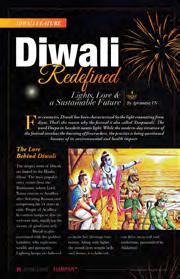
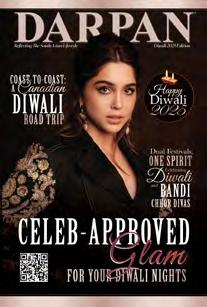
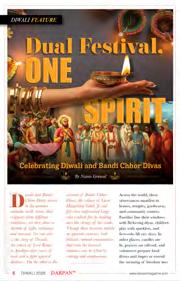
Publishers:
Gurvinder S. Hundal
90 Beyond the Lamps: Lessons of Light and Love 94 Nazar Na Lage Glam Edit: Diwali 2025’s Beauty Moment 100 Coast-to-Coast: A Canadian Diwali Road Trip
Micro-Celebrations: Tiny Spaces, Big Diwali Energy
Diwali Craft
Diwali Games
Darpan Diwali Issue is Published By: 80 The Forgotten Rituals of Diwali 84 Bandi Chhor Divas: The Cloak of 52 Strings
Darpan Publication Ltd.
Darpan Diwali Edition is published annually. No part of this magazine, including editorial content, images, or advertisements, may be reproduced or reprinted in any form without the prior written consent of the Publishers. The views expressed by contributors are not necessarily those of the Publishers, who assume no responsibility for any errors or omissions.
Ramneek S. Dhillon
Editor: Ancy Mendonza
Graphic Designer: Annie Velásquez Orjuela Hargun Singh Dhaliwal
Contributing Writers: Aprameya VN
Naina Grewal
Natasha D'souza
Shweta Kulkarni
Cover Credits: Outfit: Sabyasachi
Styling: Anaita Shroff Adajania
Advertising & Sales:
Gurvinder S. Hundal
Ramneek S. Dhillon
Copyright







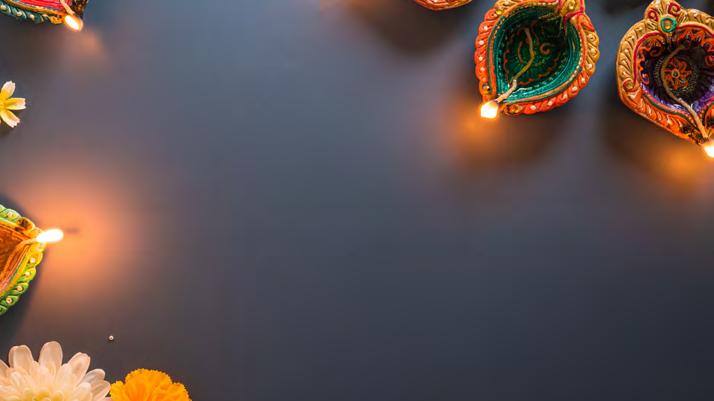



Diwali and Bandi Chhor Divas arrive in the autumn calendar with stories that originate from different traditions, yet they share a rhythm of light, resilience, and renewal. On one side is the story of Diwali, the return of Lord Rama to Ayodhya after years of exile and a fight against darkness. On the other is
By Naina Grewal

the account of Bandi Chhor Divas, the release of Guru Hargobind Sahib Ji and fifty-two imprisoned kings who walked free by holding onto the strings of his cloak. Though their histories unfold in separate contexts, both festivals remind communities that even the heaviest shadows can be lifted by courage and compassion.
Across the world, these observances manifest in homes, temples, gurdwaras, and community centers. Families line their windows with flickering diyas, children play with sparklers, and fireworks fill city skies. In other places, candles are lit, prayers are offered, and volunteers prepare food drives and langars to extend the meaning of freedom into
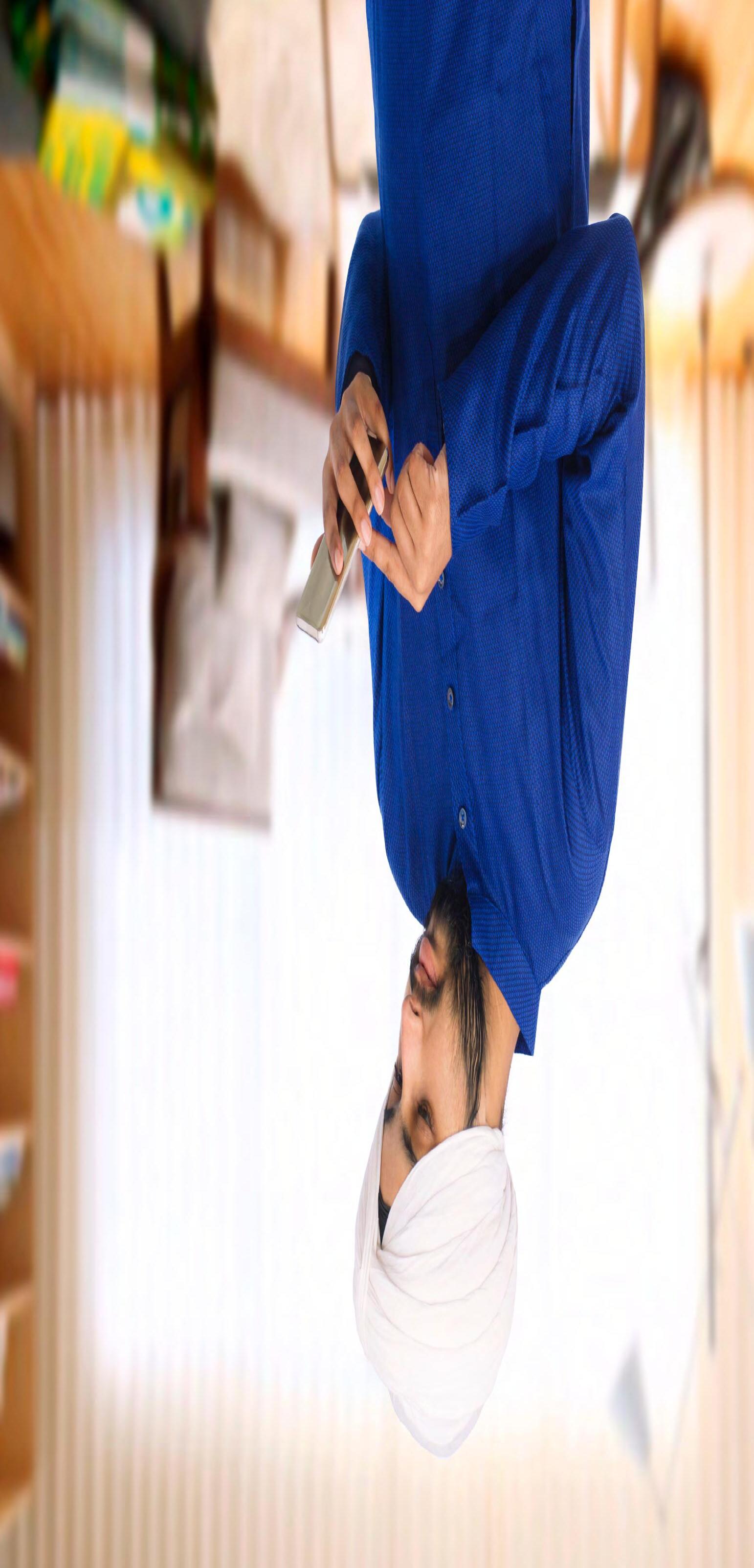



service. The outward acts of celebration are powerful, yet what sustains the festivals are the inward reflections. Both stories place emphasis not only on the triumph of a single individual but also on the collective well-being of an entire community.
In Hinduism, Diwali’s glow signals more than the end of exile; it is a public proclamation that light endures through difficulty. In Sikh history, the release of fifty-two rulers underlines the principle that freedom is most meaningful when it is shared. Together, these festivals bring families into gatherings that honor heritage and values, but they also extend lessons across traditions. In multicultural societies, many people attend both celebrations, learning that differences of practice can coexist with shared purpose. The symbolic power of light
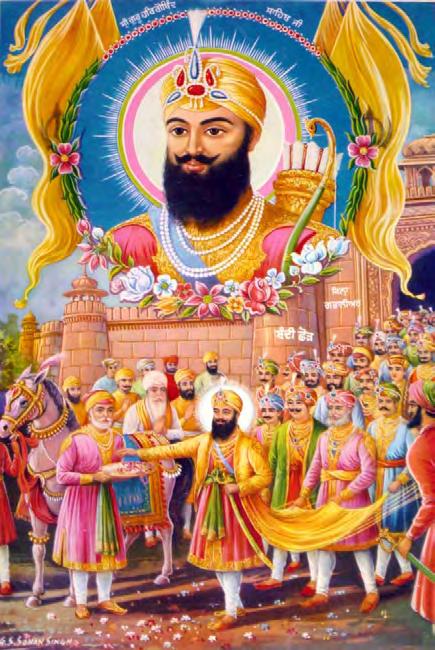
bridges the two festivals. A lamp or a candle becomes a quiet declaration that darkness, however

overwhelming, cannot last forever. That simple gesture translates across cultures and faiths, reinforcing the universality of the message. Children in classrooms may study the festivals together, discovering that even when the narratives differ, the moral centers often align. Community leaders encourage acts of service during these days, connecting spiritual teachings with practical action.
In a world often



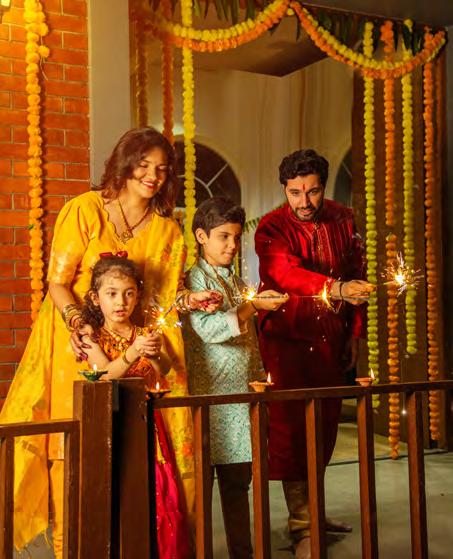
divided by boundaries of culture or creed, the simultaneous celebration of Diwali and Bandi Chhor Divas is a reminder that traditions can speak to one another. The festivals invite participants to remember that victory over hardship and the pursuit of justice are not confined to one group. They belong to all who value light, freedom, and resilience.
What sustains these observances across generations is their ability to adapt without losing their essence. The festivals travel with migration, taking root in diasporic suburbs,
busy urban streets, and rural towns. Wherever they are celebrated, they create community bonds that reach beyond origin stories. Neighbors are welcomed into festivities, students learn from one another, and society gains from traditions that value resilience, justice, and joy.
In fact, a thread that binds these two festivals is the way they transform in the diaspora. Within South Asia, Diwali and Bandi Chhor Divas can appear as distinct, with their own histories, rituals, and meanings. Yet outside of that context,
in countries like Canada, the differences blur into something shared. Together, communities explain Diwali and Bandi Chhor Divas to those unfamiliar—often to Western friends— turning them into points of togetherness as well as celebration. In this way, the festivals become more than rituals; they become points of connection, both within the diaspora and with the wider world.
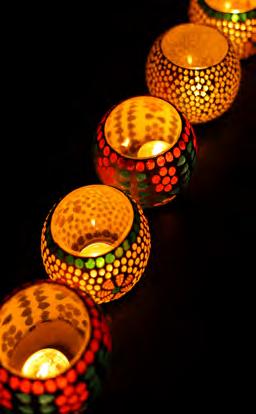
Together, Diwali and Bandi Chhor Divas show that festivals can be more than heritage markers. They can be guiding lights that affirm a common human spirit. Distinct but connected, they shine together each autumn as a shared testament to endurance and hope.

The festival of light is here, bringing with it not just joy and togetherness, but also the perfect opportunity to begin our love affair with ethnic fashion. From intimate pujas and office celebrations to cozy family luncheons and glamorous festive soirées, the season is packed with occasions, each demanding a look that balances tradition with personal style. But let’s be honest, finding the perfect outfit for every single event can often be a challenging task.

By Shweta Kulkarni
Fortunately, we have our very own Bollywood divas lighting the way for us. After all, no one serves ethnic fashion quite like our B-Town beauties. So, as the festive season unfolds, why not seek inspiration from
these screen goddesses and sparkle just as brightly?
We have curated a list of the most striking celebrity ethnic looks of the season, each one full of grace and just the right dose of drama, to help you show
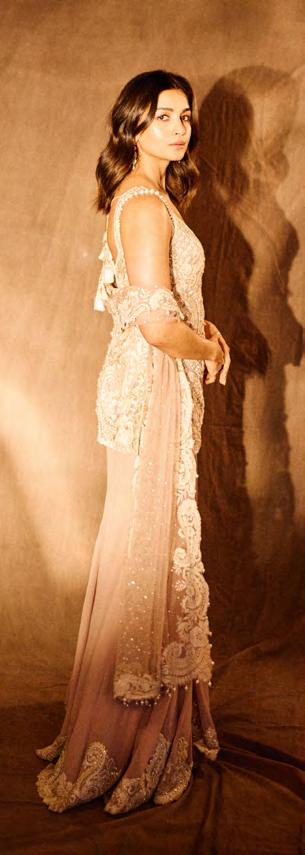
up in style and feel like the patakha that you truly are.
So, before you hit the stores or start filling your cart, look at these ethnic favorites from Bollywood’s style icons and let their style inspire your Diwali wardrobe.

Styled By: Garima Garg and Ami Patel
There is plenty to borrow from this diva’s style quotient as she has mastered the art of effortless elegance. Her dusty pink pearl sharara set, designed by Seema Gujral, is a lesson in understated luxury. The set features intricate thread, pearl, and crystal embroidery and is ideal for those who want to embrace festive fashion with subtlety. Alia’s outfit is perfect for those who are cautious about the festive bling and want to keep the desi attire simple yet elegant.

Outfit: Sabyasachi
Styled By: Anaita Shroff Adajania
Talk about slaying in a saree, and Bollywood’s rising star, Sharvari Wagh, shows us another way to do it. For Sabyasachi’s 25th anniversary celebration, she wore a signature Sabyasachi saree and styled it with a striking upcycled jacket that fused black denim with archival gold embroidery. The mix of textures—denim and tulle—created a bold fusion that felt fresh yet rooted in tradition. It’s the ultimate example of how to reinvent festive wear with confidence, and if you love innovation, Sharvari Wagh’s look is the perfect blueprint.
Outfit: Seema Gujral Design
Styled By: Mohit Rai with Tarang Agarwal
The eternal style icon, Madhuri Dixit Nene, continues to show us how to turn tradition into a statement. Nothing captures elegance like the traditional six-yard, and Madhuri shows us how to further amp up the beauty of a classic saree. For a recent shoot, the actress wore a sunshine-yellow stitched saree by Seema Gujral to which she gave an unexpected twist by adding a structured embroidered jacket. The look is a masterclass in how to elevate a classic while keeping it sophisticated. So, if you want to wear a saree this Diwali, you know where to look to add that sassy twist.
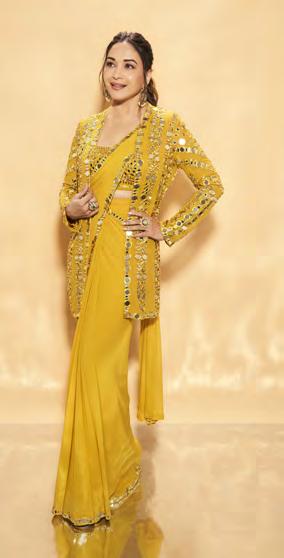

Outfit:
Rajesh Pratap Singh
Styled By: Sukriti Grover
Another fashionista known for serving some stunning fashion moments is Kriti Sanon, and her recent ethnic look is no exception. She wore a bold rani pink Anarkali suit and crimson red lehenga bottom by Rajesh Pratap Singh, creating a dramatic layered silhouette which is sure to make heads turn wherever you go. It is chic, confident, and unapologetically Indian. If you want to make a memorable entrance, this is the look to copy.


Those who don’t like a completely traditional look can go for a fusion attire like Rakul Preet Singh. The actress paired a blazer-style top with flowy sharara pants from the shelves of designer Ritika Mirchandani, seamlessly marrying Indian craftsmanship with western tailoring. This Indo-Western outfit is sleek, directional, and surprisingly easy to replicate. An excellent choice for modern minimalists, who still crave festive flair but want to keep it limited.


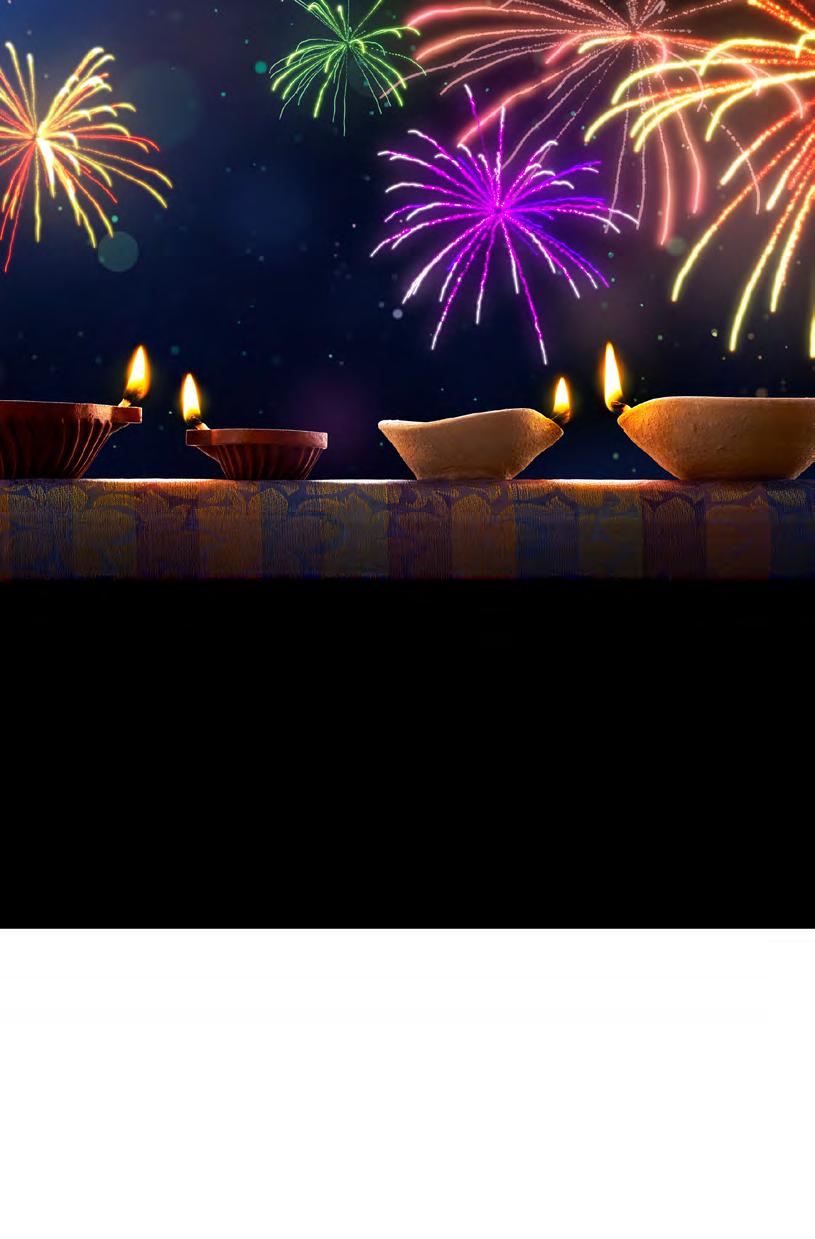
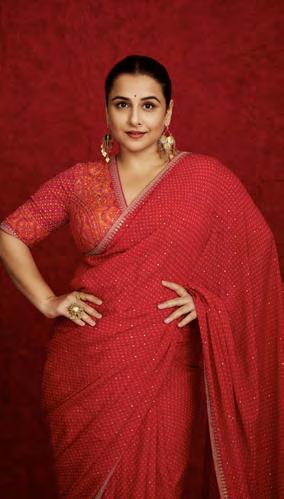
Outfit: Ritu Kumar
Styled By: Who Wore What When
No one wears the six-yards better than the beautiful Vidya Balan. She embraces the saree with utmost elegance, and her recent fuchsia and orange prina printed saree from the house of Ritu Kumar is a testament to timeless style. Paired with a stitched blouse and statement earrings, this look is effortless yet impactful and a reminder that you can never go wrong with the classic elegance of a saree.
Outfit: Gopi Vaid
For those celebrating Diwali at home, Sonakshi Sinha offers the perfect balance of comfort and elegance. Her ivory kurta–palazzo set by Gopi Vaid, adorned with delicate marodi work, gota, and thread embroidery, is subtle yet refined. Ideal for intimate gatherings, it captures the essence of festivities with simplicity and style.


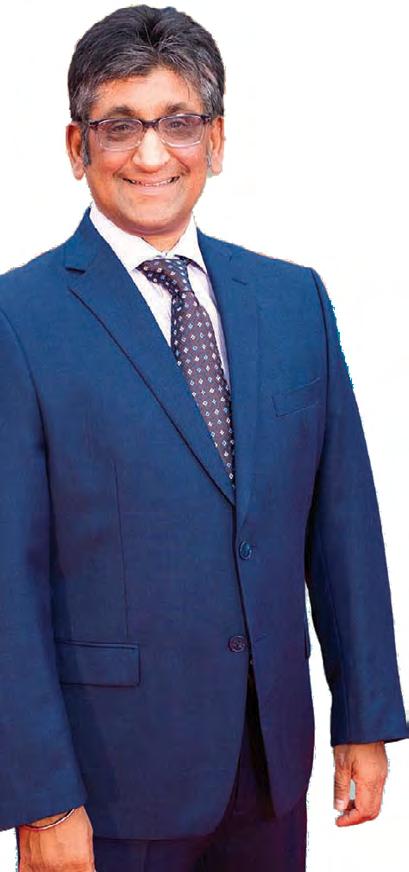
• Divorce
• Nullity / Annulment
• Cohabitation / Separation Agreement
• Pension Division
• Claims Against In-laws
• Child / Spousal Support
• Guardianship / Contact Orders / Custody / Parenting Time
• Asset / Property Division
• Child Apprehension by MCFD
• Assault
• Uttering Threats
• Theft
• Peace Bond (Recognizance)
Appointments now available in Fraser Valley (Abbotsford, Mission, Chilliwack & Harrison Hot Springs)
UNIT 2, 6678 152 ST, SURREY V3S 7J2 ( 66A & 152 ST )
Outfit: Gopi Vaid
Tamannaah Bhatia knows how to command attention, and her deep purple brocade lehenga by Gopi Vaid is a showstopper. Rich, regal, and exquisitely detailed, this look blends traditional grandeur with contemporary elegance. Ideal for evening festivities, it’s proof that bright and regal tones will always be a festive favorite.
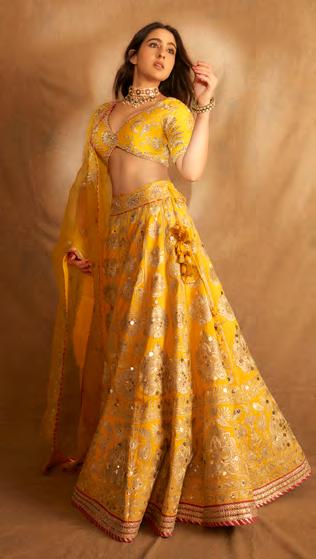
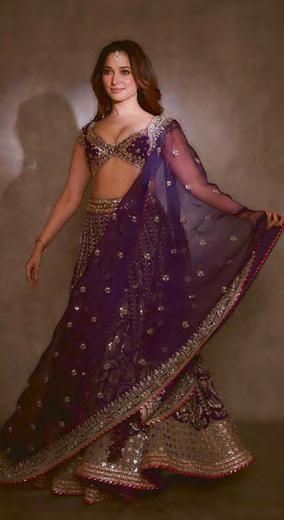
Outfit: Gopi Vaid
This Pataudi princess has a penchant for serving wonderful ethnic looks. Be it a simple all-white salwar suit or a regal lehenga set, Sara never fails to impress with her traditional outfits. And her bright yellow lehenga by Gopi Vaid is pure festive royalty. The brocade skirt, embellished with marodi, sequins, gota, and intricate goldsilver detailing, was paired with a delicately crafted plunging blouse and an embroidered organza dupatta. The result? A modernday Maharani moment—perfect for grand Diwali celebrations.

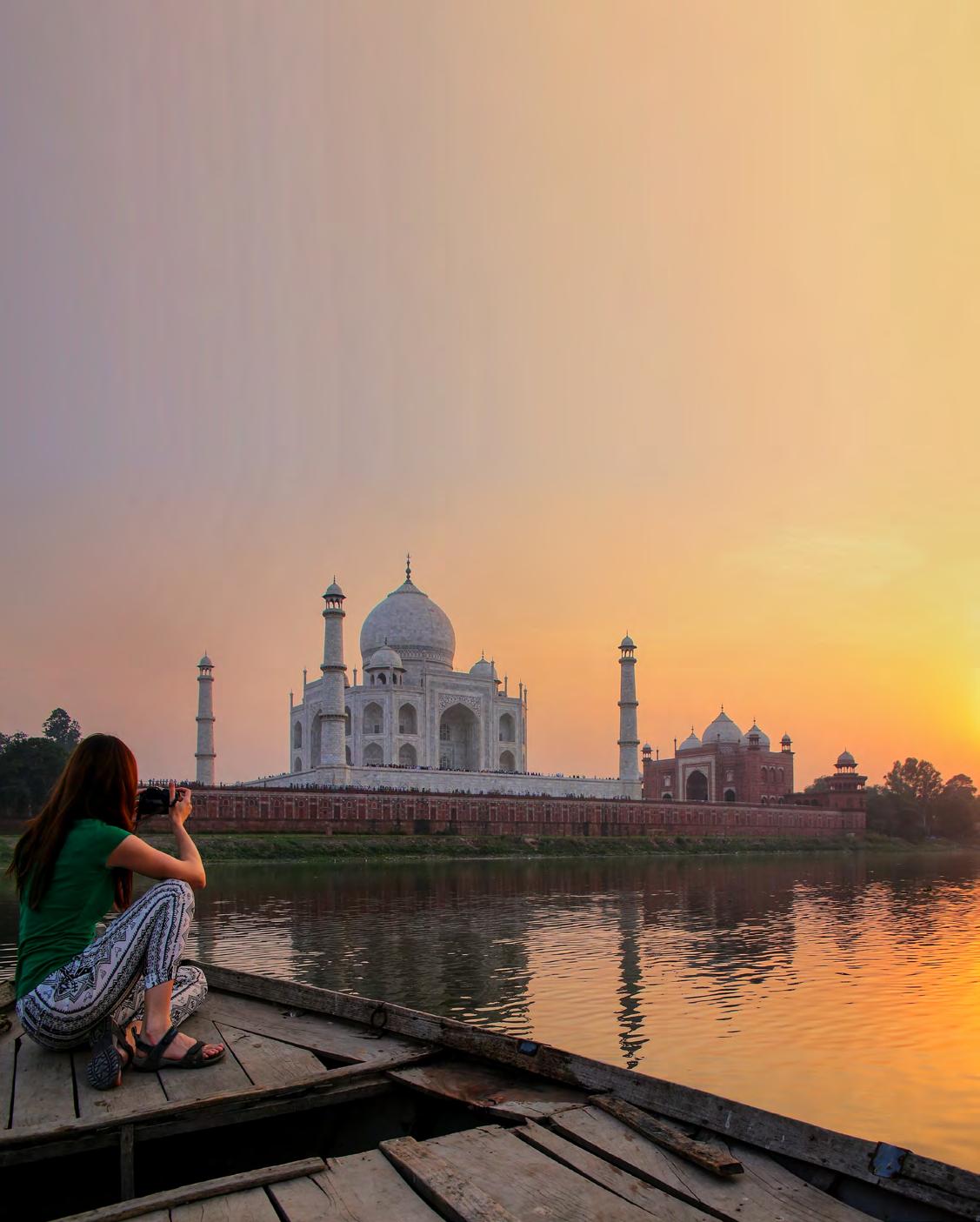





Styled By: Sanam Ratansi
Let’s be honest, shararas have never gone out of fashion since the Mughal era and are best for any festive occasions. This festive season, seek style inspo from the graceful Aditi Rao Hydari, who is known for blending old-world charm with modern silhouettes. Aditi was recently spotted wearing a gorgeous teal ensemble by couturier Bhumika Sharma, featuring a structured, embroidered jacket that she paired with flowy sharara pants. This look is perfect for fashion enthusiasts who love experimenting with classic silhouettes in contemporary ways.
Sonam Kapoor is the epitome of style and grace and never fails to impress with her unique sartorial choices. If you love experimenting with your outfits, this undisputed queen of avant-garde fashion is definitely your go-to girl. Always the one to reimagine the classics, the fashionista recently gave us one more jaw-droppingly gorgeous ethnic look. Sonam wore a jamawar print sari by Ritu Kumar but swapped the blouse for a printed silk shirt and layered it with an angarkha-inspired jacket. To top it off, she draped the pallu at the waist, adding structure and edge. Undoubtedly, the look is a masterpiece and perfect for anyone who wants to be bold and different.
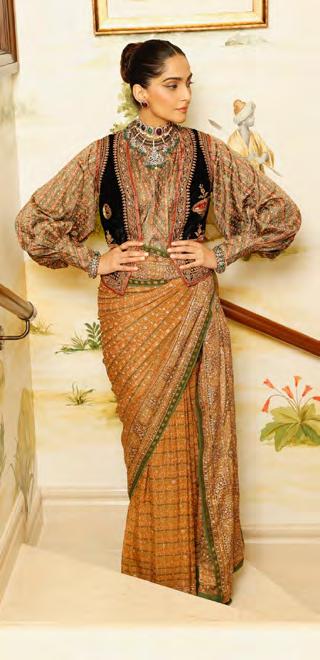

Another saree number that should inspire you this festive season is the one flaunted by Bhumi Pednekar. Sometimes, all it takes is one powerful detail. Bhumi Pednekar proves this with her white saree accented by gold work, paired with a heavily embroidered halter-neck blouse. The clean drape juxtaposed with the statement blouse adds instant glamour. If you wish to go for a classic silhouette with a hint of drama, embrace this graceful style hack like Bhumi Pednekar.


There is nothing you won’t love about Diana Penty’s desi look. The bright pink Anarkali-style full-sleeved dress, paired with a churidar and a beautiful dupatta, features flowing kalis down the waistline and is pure inspiration. It is vibrant, feminine, festive, and perfect for those wanting to make a truly desi impact with modern grace this Diwali.
So go ahead, ladies, dress in whatever makes you feel confident this festive season. Just remember to let your inner diva shine as brightly as the diyas that light up Diwali. Happy Diwali!







By Natasha D’souza

Diwali 2025 is almost here, and for Canada’s Millennials and Gen-Z South Asians, it’s shaping up to be a festival unlike any other. No longer just a tradition, Diwali has evolved into a vibrant blend of heritage, aesthetics, and technology. This year, celebrations are unfolding across TikTok feeds, brunch tables, Zoom aartis, and eco-conscious living rooms. As homes glow and wardrobes are prepped, one thing is clear: tradition doesn’t fade, it evolves.

TikTok, Bollywood & Reels: Heritage Goes Viral staying on-trend. Reimagined Gatherings: Brunch, Cards & Cultural Exchange
The real Diwali spectacle isn’t in the sky but online. Bollywood-style transition videos are already dominating feeds: hoodies snap into lehengas, cousins flip from sweatpants to sherwanis, all timed to iconic beats from Kabhi Khushi Kabhi Gham or DDLJ. These clips are more than outfit showcases; they’re declarations of identity. Rangoli tutorials, mithai-making reels, and family challenges are also lighting up social media, giving the diaspora a chance to celebrate tradition while
Traditional card parties and late-night feasts are being reinvented. Minimalist décor, terracotta tones, brass diyas, and fairy-lit corners set the scene for photogenic gatherings, while Bollywoodthemed cocktails and curated playlists turn card games into lifestyle moments. Brunches have become the new Diwali staple. Mimosas share space with mithai, avocado toast sits beside dosas, and fusion dishes like saffron pancakes or masala shakshuka marry tradition with modern














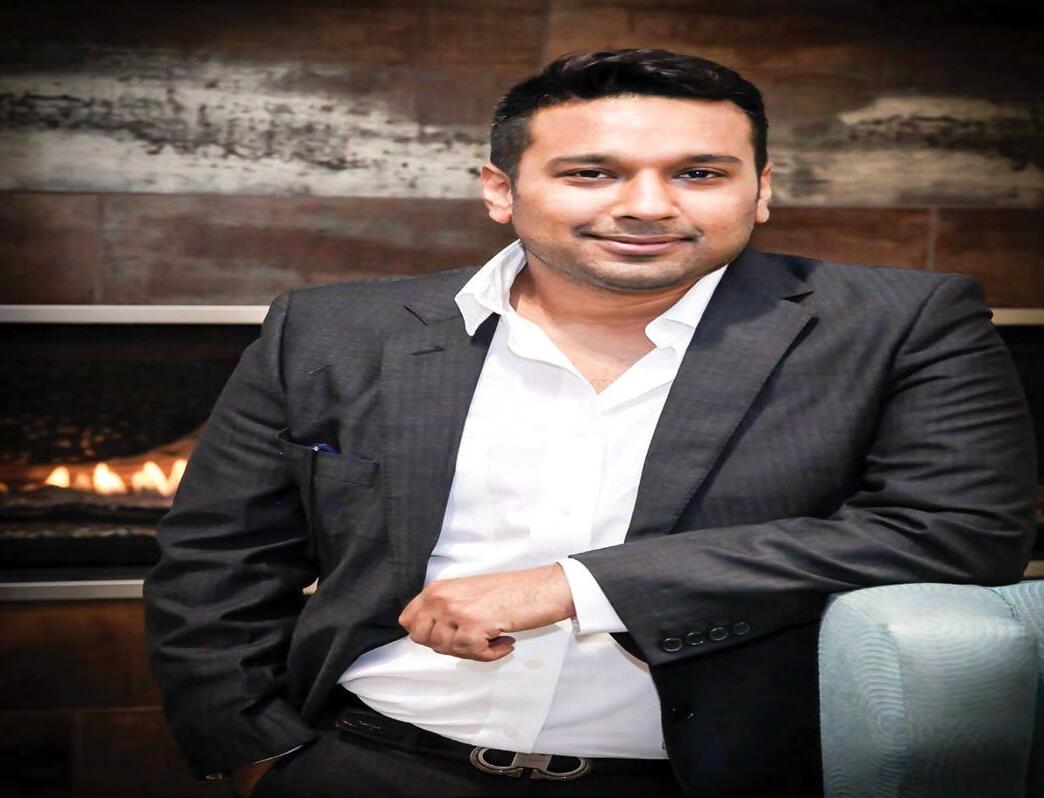
tastes. These gatherings are Instagram-ready, crosscultural, and inclusive, making it easy to welcome non-South Asian friends. Hosting a brunch this year is the perfect way to start a next-generation family tradition, marking stress-free, social, and stylish festivities.
Virtual Aartis & Devotional ConcertsRitual Meets Performance
Distance is no barrier to shared devotion. Hybrid pujas now connect families across continents; grandparents chant in Delhi, cousins play tabla in Calgary, while nieces light diyas in Vancouver. Screens may mediate the experience, but the warmth and meaning remain intact.
For those craving a bigger Diwali spectacle, devotional concerts are emerging as the must-attend events of 2025. Traditional bhajans and aartis are being remixed with live bands, electronic beats, and Bollywood mashups. These immersive performances turn worship into celebration, blending spirituality with energy, rhythm, and social connection.
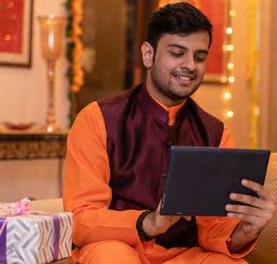
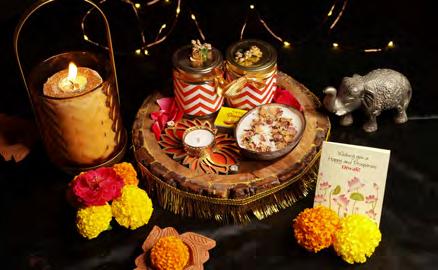
Diwali tables are no longer just decorative; they’re interactive experiences. Pop-up style setups, grazing boards and towers, DIY chaat bars, mithai flights paired with chai cocktails, and torch-your-own desserts are trending.
Cooking
has also become a social ritual: cousins and siblings gather for “mithai nights,” rolling laddoos, trading recipes, and sharing the process online. For diaspora families, these culinary experiments transform tradition into a sensory, shareable, and evolving cultural experience.
Celebrations:
Gifting & Sustainable Décor
Eco-consciousness is no longer a side note; it’s central. Handmade spice blends, thrifted saris repurposed into chic new silhouettes, seed-paper cards, and potted plants are replacing plasticladen hampers. Rangolis crafted from turmeric,
beetroot, and marigold petals double as “responsible festivity.”
For families still prepping décor and gifts, this is the perfect moment to blend style, sustainability, and tradition.
Tech at the Festival: Smart, Not Less Sacred Apps and AI tools are helping hosts plan smarter. Outfit planners, playlist mashups combining Bollywood classics with EDM, and digital RSVPs streamline organization. Technology isn’t replacing tradition, but it’s enhancing it, freeing hosts to focus on what matters most: celebration, family, and joy.
At its heart, Diwali 2025 proves that traditions can evolve without losing their soul. It’s a festival that sparks curiosity, creativity, and connection, where every lamp, ritual, and gathering becomes a chance to celebrate life in ways that are personal, playful, and unforgettable.









FBy Aprameya VN
or centuries, Diwali has been characterized by the light emanating from diyas. That’s the reason why the festival is also called ‘Deepawali’. The word Deepa in Sanskrit means light. While the modern-day iteration of the festival involves the bursting of firecrackers, the practice is being questioned because of its environmental and health impact.
The deeper roots of Diwali are linked to the Hindu itihasa. The most popular story comes from the Ramayana, where Lord Rama returns to Ayodhya after defeating Ravana and completing his 14 years in exile. People of Ayodhya lit earthen lamps or diyas to welcome him, signifying the victory of good over evil.
Diwali is also associated with the goddess Lakshmi, who represents wealth and prosperity. Lighting lamps are believed
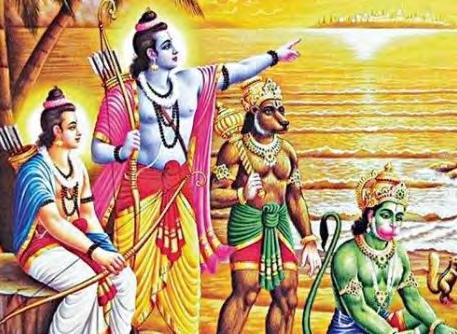
to invite her blessings into homes. Along with lights, the sound from temple bells and drums, it is believed, can drive away evil and misfortune, personified by ‘Alakshmi’.
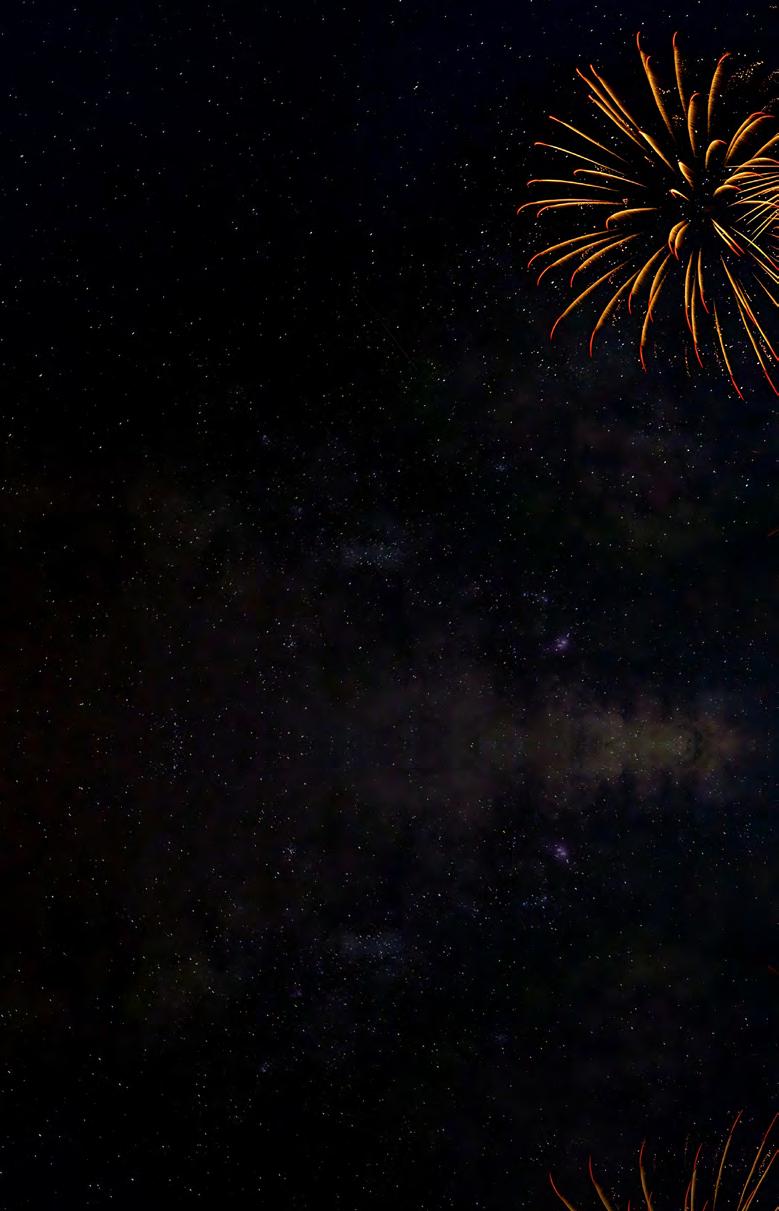

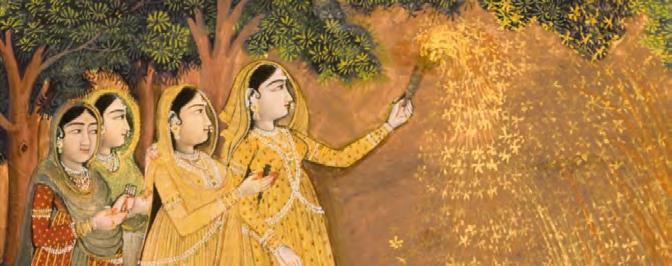
The general belief is that the tradition of fireworks during Diwali is not as old as the festival itself. Historical accounts suggest that firecrackers came to India from China, where gunpowder was invented around the 9th century. Crackers are believed to have entered India through trade routes around the 15th century. Over time, their use merged with Diwali festivities. By the late medieval period, fireworks had become a way for royal courts and wealthy families to showcase grandeur during Diwali. In modern times, firecrackers became a mass-produced product, accessible to households across the country.
However, some people believe that firecrackers in some forms have always been a part of the festival for thousands of years. They link the bursting of firecrackers to the worship of ancestors, which takes place before Diwali during the ‘Shraddh’ period. It is believed that lights and sounds coming from firecrackers illuminate the path
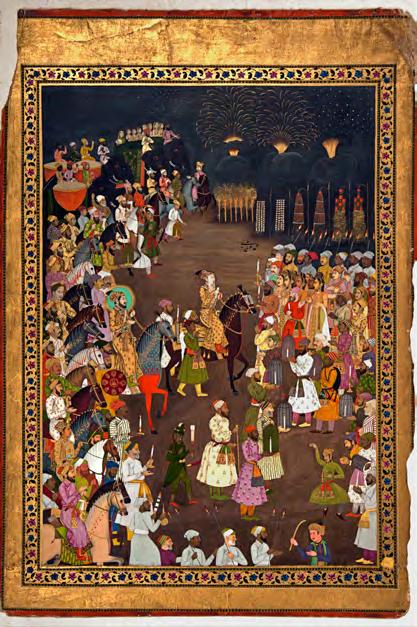
for ancestors to return to heaven. Nevertheless, modern fireworks combined with earthen lamps, candles, and electric lights have turned Diwali into the festival of lights as we know it today.
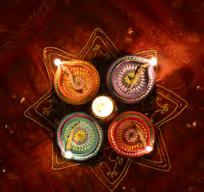






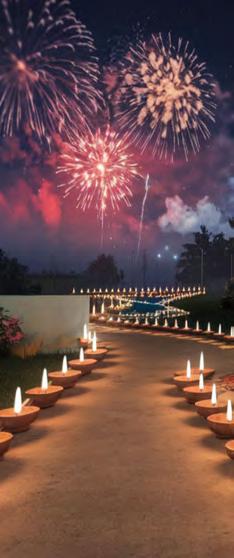
The rising use of firecrackers has now come under scrutiny. Diwali night often sees air quality levels in major Indian cities dropping to hazardous levels. Crackers release large amounts of particulate matter (PM2.5 and PM10), sulfur dioxide, and nitrogen oxides. These pollutants aggravate respiratory diseases like asthma and bronchitis, especially among children and the elderly. Noise pollution is another side effect. Firecrackers can reach sound levels above 125 decibels, which is harmful to human ears and distressing to dogs, birds, and other animals.
With growing awareness of environmental damage, people are turning to alternatives. Drone light shows are among the most striking new features of Diwali celebrations. Using hundreds of synchronized drones equipped with LED lights, these shows can create large-scale visual spectacles in the night sky.
First introduced in India during major public events like Independence Day and Republic Day, these shows create vivid displays while avoiding the smoke and noise. The best example has been the 2024 Deepotsav in Ayodhya, where 500 ‘Madein-India’ drones undertook a



light show, depicting various elements from the Ramayana.
As Diwali continues to evolve, it remains rooted in its timeless essence—the triumph of light over darkness, knowledge over ignorance, and hope over despair. Whether through the glow of diyas, the brilliance of fireworks, or the shimmer of modern drone shows, the festival reminds us to embrace joy, unity, and renewal. This festive season, may the lights you kindle illuminate not just your home, but also your heart, with prosperity, health, and peace.












Diwali may be known as the festival of lights, but its meaning is as diverse as India itself. Beyond the sparkle of diyas and the burst of crackers, every region weaves its own tale into the celebration. Here’s a journey through how different parts of the country celebrate the festival, each adding its own color, sound, and soul to the season of lights.
In Punjab, Diwali is strongly linked with Sikh history. The day coincides with

By Aprameya VN
Bandi Chhor Divas, or the 'Day of Liberation'.
According to Sikh tradition, Guru Hargobind Sahib, the sixth Guru, was released


from captivity by Emperor Jahangir in 1619. The Guru, however, refused to leave unless 52 other imprisoned kings were freed with him. A special robe with 52 tassels was made so each ruler could hold onto one as they walked out together. For Sikhs, the day is less about fireworks and more about freedom and justice. The Harmandir Sahib in Amritsar is illuminated with thousands of lamps and a stunning display of lights, drawing devotees from around the world. The significance of Bandi Chhor Divas lies not just in political liberation but also in spiritual freedom from ignorance and oppression.
In West Bengal, Assam, and Odisha, the festival of Kali Pujo , dedicated to the goddess Kali , a fierce form of Adi Parashakti , coincides with Diwali. Unlike the North Indian focus on Lord Rama, Bengalis worship Kali as the destroyer of evil and protector of the good. Hindu Puranas state that when demons threatened the balance of the world, Kali emerged in a terrifying form to annihilate them. On Kali Pujo , households and community pandals build altars adorned with red hibiscus flowers and
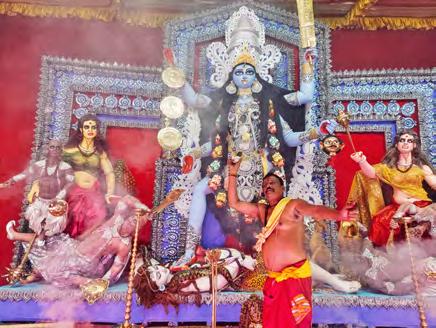
food offerings. The rituals often include animal sacrifices, reflecting Hinduism's tantric traditions, and Sanskrit mantras. Recitation of the popular ' Shyam Sangeet ' dedicated to the Goddess Kali is also observed across the region.
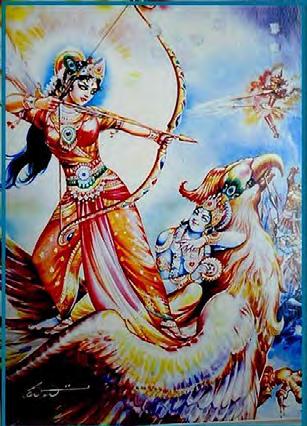
In southern states, Diwali traditions differ from the northern narrative of Rama’s return. Here, the festival often begins a day earlier with Naraka Chaturdashi . According to the Hindu itihasa, Lord Krishna, with the help of his consort Satyabhama , killed the demon king Narakasura , who had
terrorized the heavens and the earth. His defeat symbolized the victory of divine justice over tyranny. In Tamil Nadu, Diwali is celebrated by taking an early oil bath before sunrise, believed to cleanse the body of sins. This is called ' Ganga Snanam ' or ' Abhyanga Snanam '. In Karnataka and Andhra Pradesh, too, Naraka

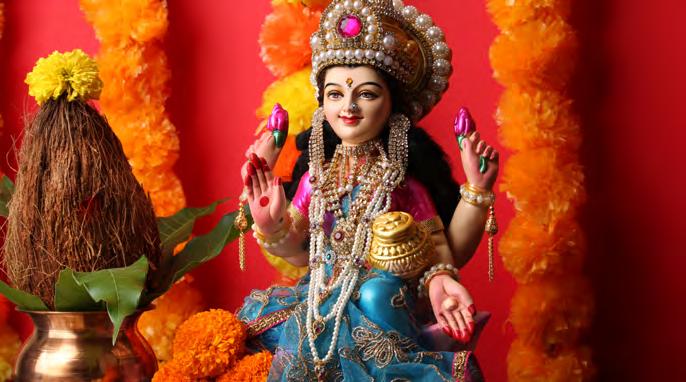
Chaturdashi is the highlight of the celebrations.
Interestingly, in Kerala, Diwali is observed on a smaller scale while Onam remains the most popular festival.
In Gujarat, Diwali is closely tied to Lakshmi Puja and the Gujarati New Year. Diwali is considered the most auspicious time for business and trade. The tradition revolves around inviting Goddess Lakshmi, the deity of wealth and prosperity, into homes and shops. Traders perform Chopda Pujan , which precedes the start of the new accounting year. ' Chopda ' in Gujarati means ledger book. The Gujarati community also marks Bestu Varas, or the New Year, on the day after Diwali. Decorating homes
with rangolis, wearing new clothes, bursting crackers, and lighting of diyas signify the new year.
For India's Jain community, too, Diwali is a significant religious occasion. Jainism marks the ' nirvana ' of Mahavira, the 24th and the last Tirthankara. Jainism emphasizes non-violence or ' ahimsa '. Hence, many
observant Jains avoid bursting crackers and instead celebrate Diwali by visiting temples and reciting prayers. Members of the Shwetambar sect also observe a fast during this period. Like Gujarati Hindus, Jains celebrate their new year the day after Diwali. Jains, a predominantly trading community, begin their accounting year from this day.
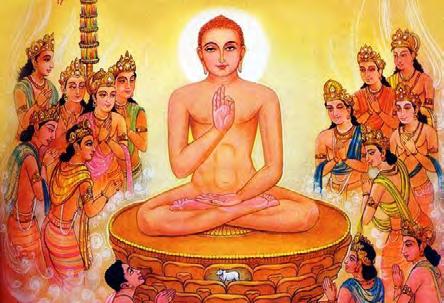
























By Natasha D’souza
Sure, mithai and money envelopes are timeless, but this Diwali, why not delight your loved ones with gifts that are fresh, playful, and memorable? From quirky games and flavor-packed spice sets to cozy movie-night kits and personalized keepsakes, these picks infuse the festival with creativity, culture, and a little extra sparkle.
Filmi Trivia: A South Asian-Canadian Game
Price: CA$25
Where to Buy: filmitrivia.com
Perfect for: The Bollywood buff in the family
Turn any Diwali get-together into a full-blown filmi showdown with this clever trivia game made for South Asian movie lovers. With questions spanning decades of iconic dialogues, cult classics, and cinematic milestones, it’s the ultimate test of desi pop-culture knowledge and a guaranteed hit at family parties.
Healing Ghee Lip Balm 5-Pack by Ghlee
Price: CA$64
Where to buy: ghlee.com
Perfect for: Natural skincare fans
2.
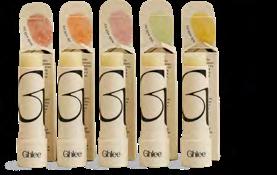
Give the gift of soft, nourished lips this Diwali with the Healing Ghee Lip Balm 5-pack. Compact and travel-friendly, this set is ideal for sharing or indulging, making it a thoughtful, practical gift that blends care with a touch of luxury.




Cocktail Bomb Shop – Lovely Variety Pack
Price: CA$29.95
Where to Buy: cocktailbombshop.ca
Perfect for: The party host with Pinterestworthy drink stations
Upgrade Diwali parties with these Canadianmade cocktail bombs that fizz into sparkling drinks—just drop them in sparkling water, and you’re good to go. With flavors like Mojito, Mimosa, Pina Colada, and more, they’re great for mocktails and cocktails. noge and a guaranteed hit at family parties.
Indian Charms 3-Pack Spice Set
Price: CA$35
Where to buy: aspiceaffair.com
Perfect for: The home chef who’s always recreating family recipes
This beautiful spice trio is a gift that truly tastes like home. Featuring blends like garam masala, curry madras, butter chicken masala, and more, it’s a flavorful reminder of tradition packed in chic, reusable jars that look right at home in a modern kitchen.
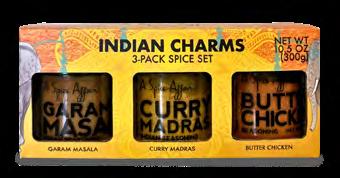
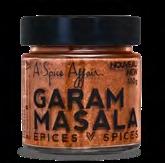
Pop ‘N Dulge Movie Night Popcorn Set Variety Pack
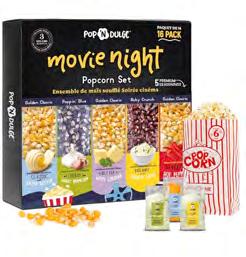
Price: CA$32.98
Where to buy: Amazon Canada
Perfect for: The friend who’s always suggesting “one more movie”
Who says Diwali nights have to end after the aarti? This popcorn trove, complete with gourmet kernels, five seasoning varieties, and classic popcorn bags, is perfect for creating a cozy film night in. Throw in a list of Bollywood classics or a streaming gift card to complete the experience.
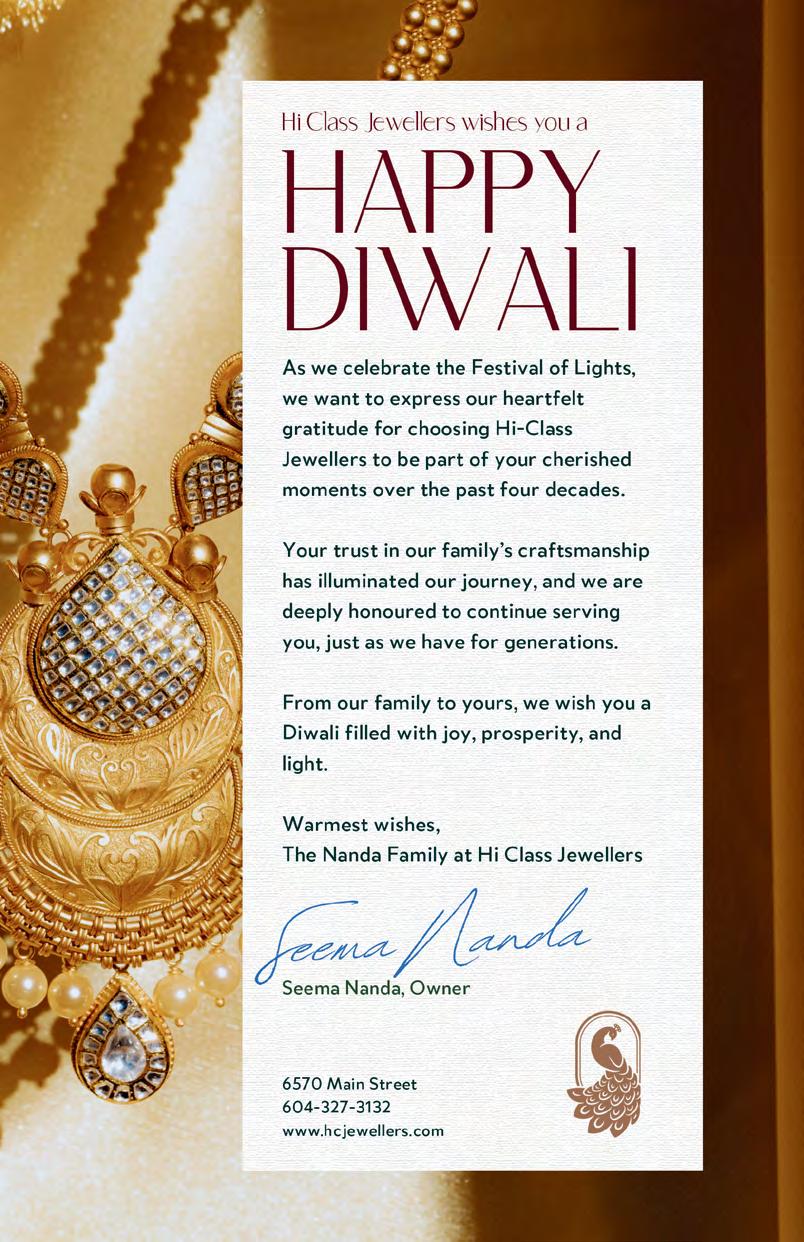
6.
Family Name Initial Sign
Metal Wall Art by Callie
Price: CA$53 onwards
Where to buy: callie.com


Perfect for: Personalized gift lovers
Add a thoughtful, contemporary twist to Diwali gifting with a custom metal nameplate featuring the family’s initials or surname. Sleek and timeless, it’s more than just décor—it’s a keepsake that celebrates identity, belonging, and togetherness.
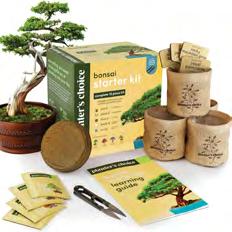
9.
Grace & Stella
Dew-Tox & Chill Kit
Price: CA$22
Where to buy: graceandstella.com

Perfect for: Self-care enthusiasts
The holidays can be hectic, and this selfcare kit is the perfect antidote. Packed with hydrating sheet masks, soothing eye gels, and refreshing facial mists, it turns any night into a spa night.
8.
Planter’s Choice Bonsai Tree DIY
Price: CA$35
Where to buy: Amazon Canada
Perfect for: Nature lovers and hobbyists
Slow living meets festive gifting with this mindful DIY kit that lets recipients grow and nurture their very own bonsai tree. Beyond being a beautiful addition to any space, it’s a gift of patience and creativity and a gentle, grounding ritual to carry long after Diwali lights have dimmed.
Price: CA$33.99
Where to buy: Amazon Canada
Perfect for: Frequent travelers
Comfort meets thoughtfulness with a memory foam travel pillow designed for long flights and road trips during festive travels.


10.

Price: CA$23.99
Where to buy: safrcandles.ca
Perfect for: Nostalgic scent lovers
Price: CA$79.98
Where to buy: homedepot.ca
Perfect for: Wellness and décor enthusiasts
A gift that’s equal parts décor and self-care, this hand-carved salt lamp is believed to release negative ions that promote relaxation and counter everyday stress. Easy to clean and maintain, it can be placed anywhere from a child’s room for peaceful sleep to a home office to balance screen time while its soft, ambient glow adds a calming energy to Diwali celebrations.
11.
Inspired by the scents and stories of South Asian heritage, these 7-oz jar candles from Nani ka Ghar and Barish to Kitab, Bazar, Dhoop, and Raat ki Rani, each capture a cherished memory in a flicker. Handpoured in small batches with natural soy wax, ecofriendly wood wicks, and phthalate- and paraben-free fragrances, they’re perfect for infusing any space with the comforting essence of childhood. With a burn time of over 10 hours, they make a thoughtful Diwali gift that transforms a home into a nostalgic, sensory escape.
Lush Diwali Collection–Limited
Edition Bath Treats
Price: CA$9.50 onwards
Where to buy: Lush Canada
Perfect for: Anyone who loves luxurious, aromatic showers

12.
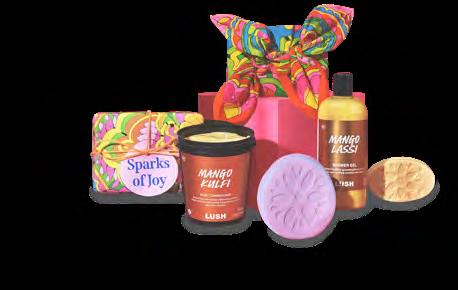
Celebrate Diwali with Lush’s 2025 collection, featuring indulgent seasonal favorites like the Mango Kulfi Body Conditioner, Mango Lassi Shower Gel, and the sparkling Prakash Bath Bomb. The Prakash Bath Bomb, inspired by traditional rangoli designs, adds a splash of color and shimmer to a relaxing soak. These limited-edition shower must-haves make perfect gifts that combine luxury, sustainability, and festive feels.

wishes you Happy Diwali!
Brighten your family’s Diwali by sending love and prosperity back home this festive season with BMO Global Money Transfer.

Rohit Sharma BMO Global Cricket Ambassador
*Terms and Conditions apply. Visit bmo.com/globalmoneytransfer for details.

• 6 tablespoons Desi Ghee
• 2 pinches of Asafoetida (Hing)

By Chef Vicky Ratnani@vickythechef
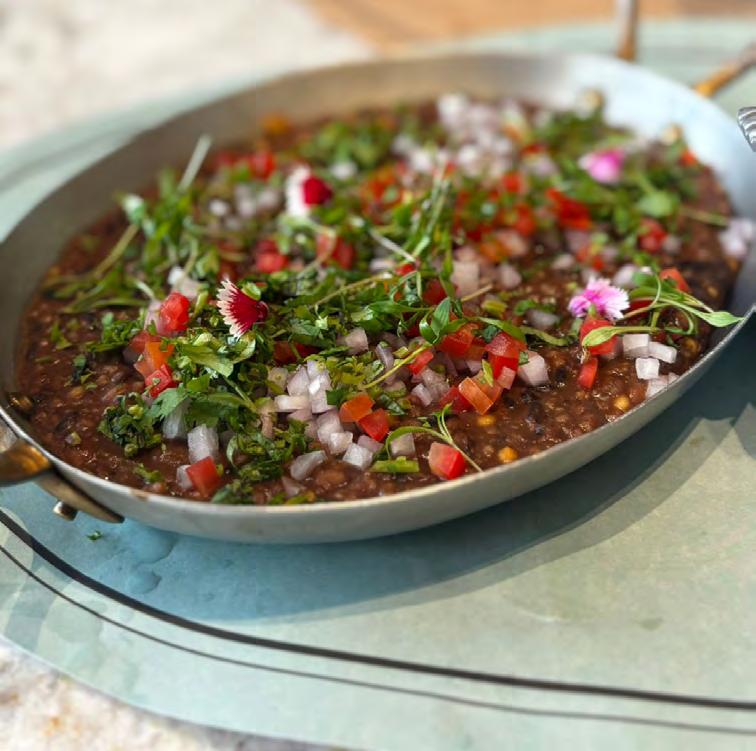
• 1 teaspoon Cumin Seeds
• 2 tablespoons Ginger, minced
• 2 tablespoons Green Chili, chopped
• 10-12 Curry Leaves
• ½ teaspoon Turmeric Powder
• ½ teaspoon Red Chili Powder
• 1 teaspoon Cumin Powder
• 1/2 cup Pearl Barley
• 1 cup Pearl Millet (Bajra)
• ½ cup Sorghum (Jowar)

• ½ cup Moong Dal
• ½ cup Black Rice
• 1 tablespoon Salt
• 12 cups of Water
1. Prep: In three separate bowls, wash and soak bajra for at least 8 hours; jowar, moong dal, and pearl barley for 30 minutes before cooking.
2. In a kadhai, heat 2 tablespoons of desi ghee. Once hot, add hing, cumin seeds, and curry leaves. Let them crackle for 30 seconds. Add minced ginger and green chilies, sautéing for a minute.
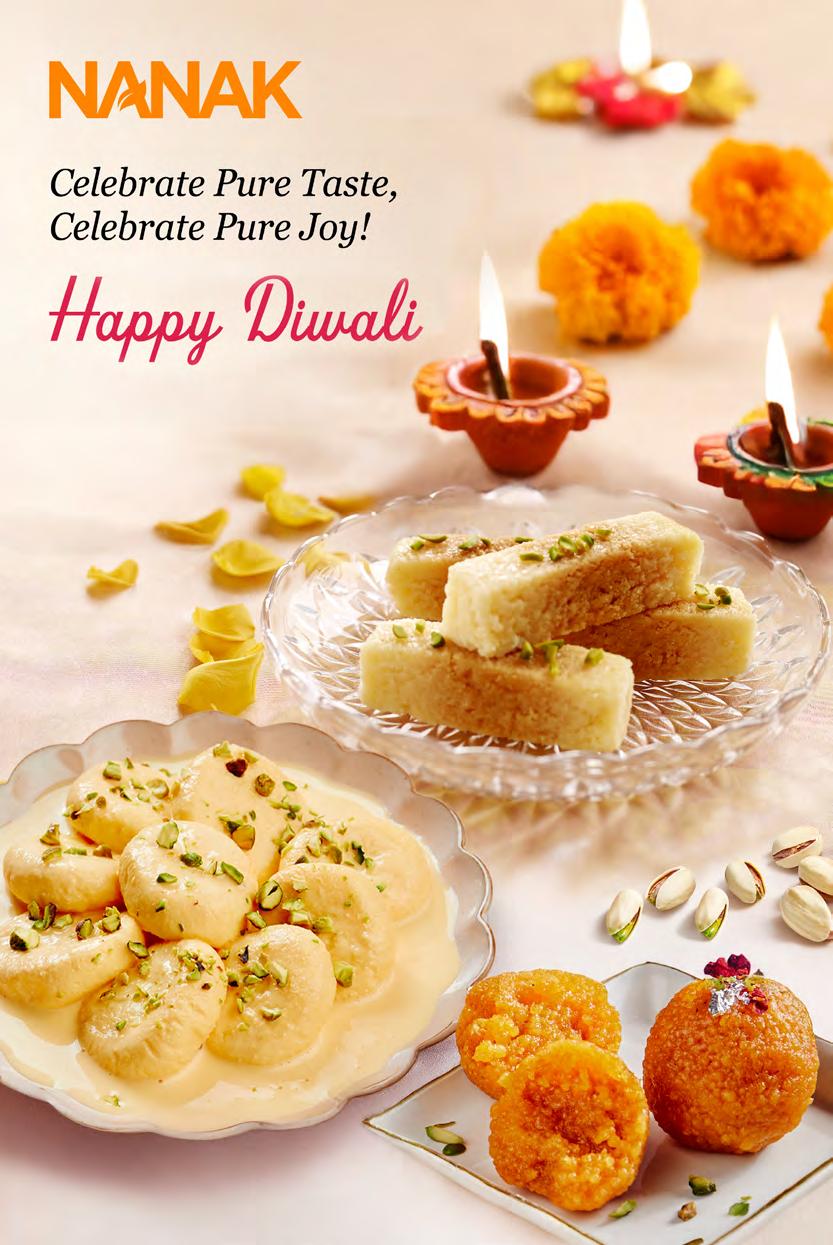
3. Stir in turmeric, red chili powder, and cumin powder.
4. Add the soaked grains, dal, and rice, mixing well. Pour the water and salt.
5. Cook on low heat until everything is soft, stirring occasionally. Drizzle with remaining ghee before serving.






RAVINDER R. S. UPPAL *PERSONAL LAW CORPORATION AT

■ CHILD / SPOUSAL SUPPORT
■ GUARDIANSHIP / CONTACT ORDERS / CUSTODY / ACCESS
■ ASSET / PROPERTY DIVISION
■ MAJOR ICBC CLAIMS
■ MEDICAL & DENTAL MALPRACTICE
■ EMPLOYMENT DISPUTES
■ PRIVATE INSURANCE DISPUTES
■ DEFAMATION
■ DEBT COLLECTION MATTERS
ASHLEY A. ATHWAL *PERSONAL LAW CORPORATION

■ BUILDERS LIEN CLAIMS
■ FRANCHISE & LEASE DISPUTE
■ PREPARATION OF WILLS & RELATED DOCUMENTS
■ ESTATE LITIGATION & WILLS VARIATION CLAIMS
■ BUYING AND SELLING PROPERTY
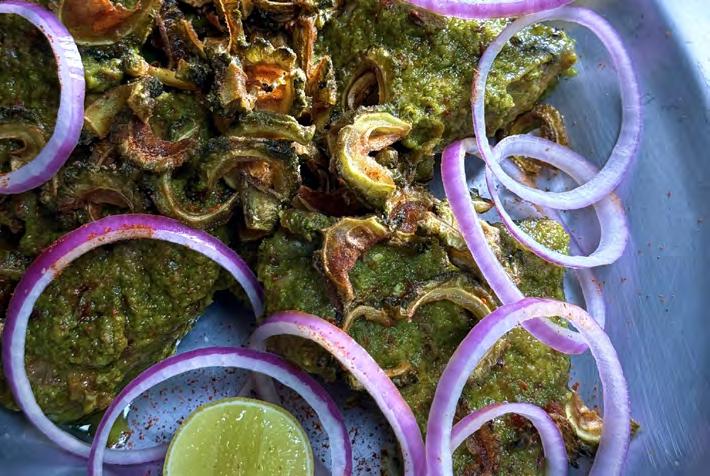
with
• 400 gms Fish Fillets (Rohu or Surmai)
• 2 Bitter Gourds (Karela), thinly sliced, salted, and fried
For Green masala:
• 1 bunch Fresh Coriander
• Few Mint leaves
• 2 Green chilies
• 5 cloves Garlic
• 1-inch Ginger
• 1/2 teaspoon Cumin
• 2 teaspoons Lemon Juice

Spices:
• 1/4 teaspoon Turmeric
• 1 teaspoon Coriander Powder
• 2 tablespoons Oil
• Salt to taste
1. Blend green masala to a coarse paste.
2. Marinate fish with salt, turmeric, lemon, and 1 tablespoon green paste for 20 min.



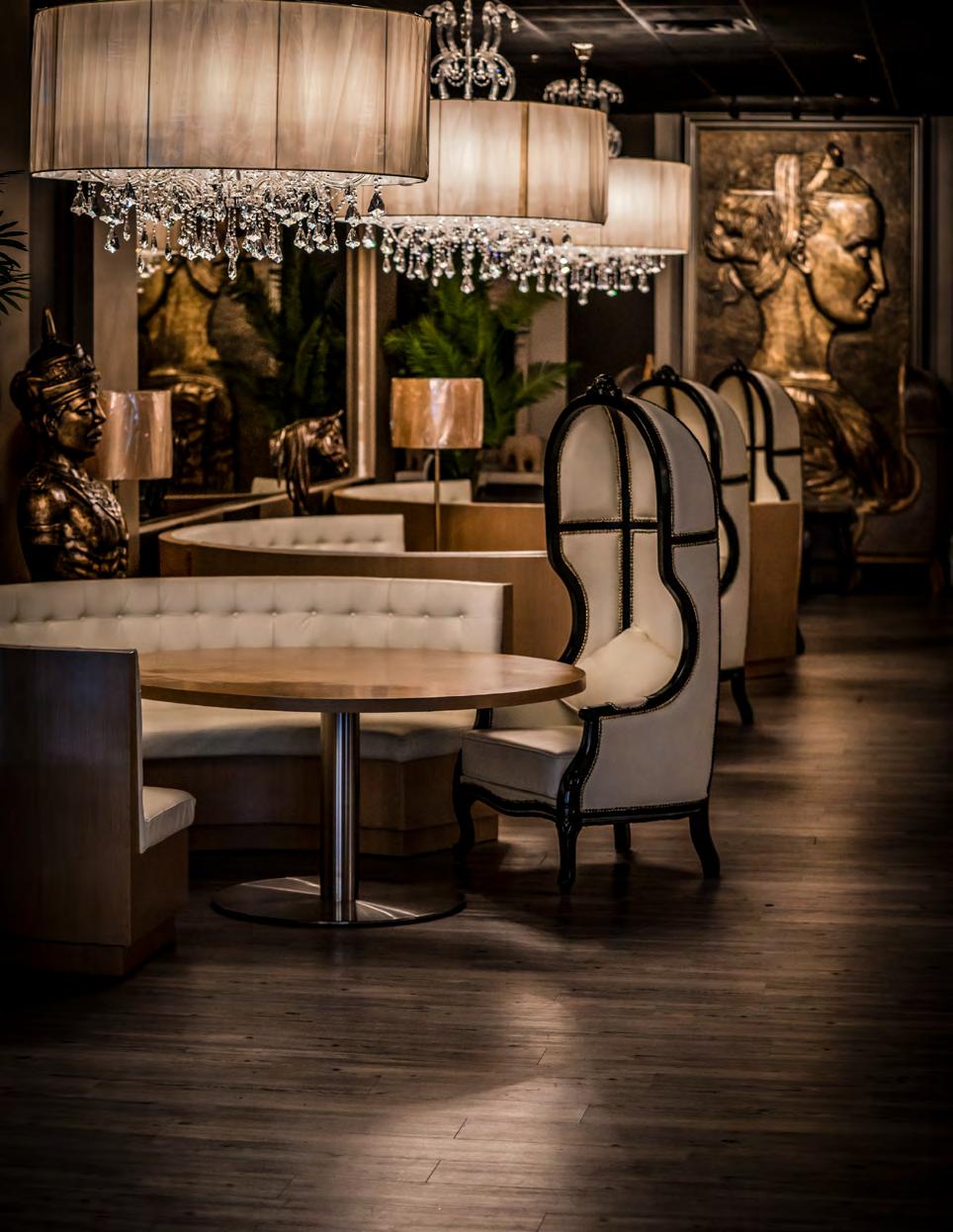
3. Heat oil, sear fish until golden and cooked.
4. In the same pan, add the remaining green masala, sauté briefly.
5. Add fried karela, toss with masala, add fish back, and finish.
6. Serve hot with koki or rice.






• 450-500 gms Sea bass
• 1 teaspoon Salt
• 1/2 teaspoon Red Chilli Powder
• 2 teaspoon Coconut Oil
• 1 Zucchini, sliced as ribbons
• 1/2 teaspoon Mustard Seeds
• 1/2 teaspoon Cumin Seeds
• 8-10 Curry Leaves
• 2 Bird’s eye chili, slit
• 1 medium Onion, chopped
• 1 teaspoon Garlic, chopped
• 1 teaspoon Ginger, chopped


• 3-4 Cherry Tomatoes
• 1 teaspoon Red Chilli Powder
• 1/2 teaspoon Turmeric Powder
• 1 teaspoon Coriander Powder
• 1 teaspoon Garam Masala
• 1/4cup Water
• 200ml Pineapple Juice
• Salt to taste
• 2 tablespoons Coriander, chopped
• 4-5 tablespoons pineapple, finely chopped
• 1 cup Coconut Milk










1. Marinate the fish with salt and red chili powder and keep aside for 30 minutes.
2. Wrap the fish in zucchini ribbons and sear it for 1 minute on each side. Set aside the fish. In a skillet, heat the oil and add mustard and cumin seeds, let them crackle, and add curry leaves. To this, add bird’s eye chili, onion, ginger, and garlic, and sauté for 2 minutes.
3. Add cherry tomatoes with dry spices and stir with water and pineapple juice. Add salt and coriander.
4. To finish, add chopped pineapple and fish.
5. Cover and cook for 5 to 7 minutes. Add the coconut milk and season to taste. Add the fish back into the casserole and cook for 4 minutes.
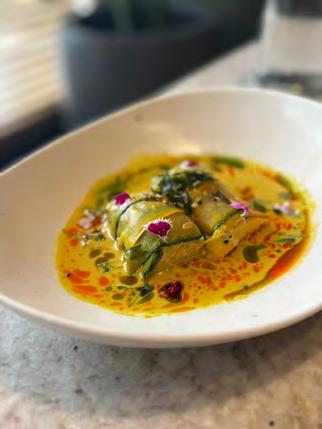


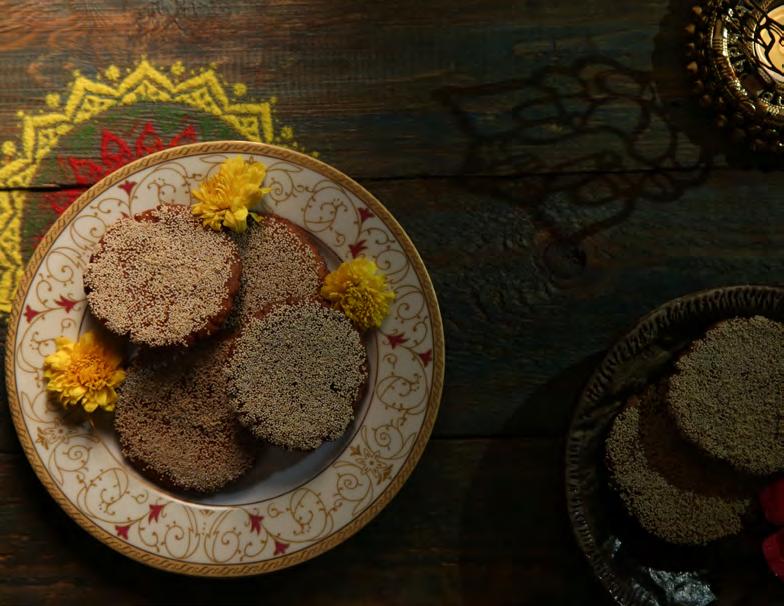
• 2 cups Rice (rice should not be sticky)
• 2 cups grated jaggery
• 2 tsp ghee + for deep frying
• 2 tbsp milk
• 2 tbsp poppy seeds

• Wash the rice twice. Soak it well in water for five days. Change the water daily.
• On the sixth day, drain the water and spread soaked rice grains on a cloth. Let them dry out.
• Grind to a dry, fine powder. Sieve the powder through a fine mesh.

By Chef Ranveer Brar @ranveer.brar
• Combine powdered rice, jaggery, ghee and start kneading. Add milk to make a pliable dough. It should be semi-soft.
• Divide into 12-14 equal portions and make balls out of it.
• Sprinkle poppy seeds and place a dough ball over it. Start rolling over it and roll like a thick puri.
• Heat ghee in a deep vessel. Deep fry the prepared anarsa in the ghee till golden brown.
• Drain the excess ghee and serve.


By Chef Vicky Ratnani
• 12-14 Mushrooms
• 3 large Onions
• 1 Tomato
• 2-3 Green Chilies
• 1-inch Ginger
• 1 Bay Leaf (Tej Patta)
• ½ teaspoon Turmeric Powder
• 1 teaspoon Coriander Powder
• 1 teaspoon or slightly less Garam Masala Powder
• Salt to taste
• 2 tablespoon Oil
• Coriander Leaves to garnish

1. Rinse well with water and scrape the skin off the Khumbyun mushrooms. (If using button mushrooms, clean with a kitchen cloth to get rid of dirt and grit.)
2. Cut mushrooms horizontally into 2 or 4 pieces or slices as desired.
3. Finely chop onions, tomatoes, ginger, and chilies.
4. In a pressure cooker, heat 2 tablespoons of oil (or more if you want a smoother gravy) and add chopped onions.
5. Sauté on medium flame until onions are brown (caramelized).

Add chopped tomatoes, chilies, ginger, and cook on high heat for a minute or so.
6. Add a cup of hot water and close the lid of the cooker. After the first whistle, lower the flame and let the contents cook under pressure for 5-7 minutes.
7. Turn off the flame and let the cooker cool down. Once the pressure is released, whisk the gravy using a wooden whisk or Mandhiyaro until homogeneous.
8. Add mushrooms, salt, bay leaf, followed by turmeric, coriander powder, and garam masala powder,
and mix well. Add 2 cups of hot water and again close the lid of the cooker. Cook for 3-4 whistles or lower the flame after the first whistle and cook under pressure for 10 minutes.
9. Garnish with coriander leaves and serve with roti or as a side with Dal and rice.
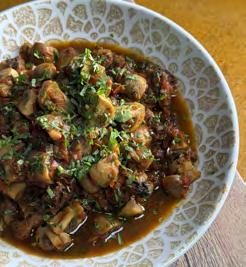






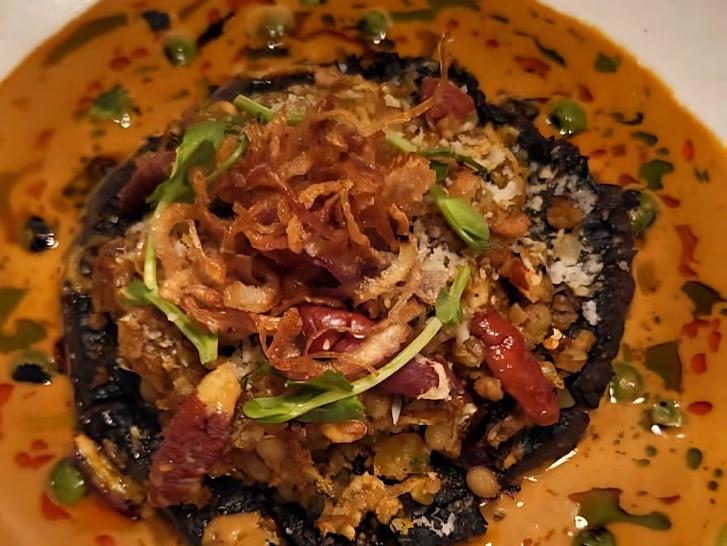
Grilled Portobello Mushrooms
INGREDIENTS
• 4 large Portobello mushrooms, stems removed
• 2 tablespoon Olive oil
• 1 teaspoon Garlic Paste
• Salt to taste
• Black Pepper to taste
DIRECTIONS
Brush mushrooms with oil, garlic paste, salt & pepper. Roast at 200°C for 10 minutes until tender but intact. Set aside.

By Chef Vicky Ratnani@vickythechef
Paneer, Millet & Pecan Stuffing
INGREDIENTS
• 1 cup Paneer, coarsely crumbled
• ½ cup Cooked barnyard millet (or foxtail millet)
• ¼ cup Toasted U.S. pecans, chopped
• 1 teaspoon Ginger, grated
• 1 Green chili, finely chopped
• ½ teaspoon Garam Masala
• ½ teaspoon Cumin Seeds
• ¼ teaspoon Turmeric
• Salt to taste

• 2 tablespoons Coriander, chopped
• 1 tablespoon Ghee or neutral oil
1. In a pan, heat ghee. Add cumin seeds, then ginger and chili.
2. Add turmeric, garam masala, then paneer. Sauté lightly.
3. Mix in cooked millet and chopped pecans. Season with salt.
4. Finish with fresh coriander. Let the mix be dry but cohesive.
5. Cool slightly and stuff into the roasted mushroom caps.


Korma Sauce
• 1/3 cup U.S. pecans (raw, unsalted)
• 1 small Onion, sliced
• 3 cloves of Garlic
• 1-inch Ginger
• 2 pods Green Cardamom
• ½ teaspoon Fennel Seeds
• 1+1/2 tablespoons Ghee
• A pinch of Turmeric
• ¼ teaspoon White Pepper
• 1.5 cups of Water or Vegetable stock
• Salt to taste













• Splash of cream or coconut milk (optional)
• Few drops of lemon juice
1. Sauté onions, garlic, ginger, cardamom, and fennel in ghee until soft.
2. Add turmeric and white pepper.
3. Add water/stock and bring to a simmer.
4. Blend with pecans until creamy. Strain if needed.
5. Return to pan. Adjust consistency. Finish with lemon juice.
1. Warm the stuffed mushroom caps in the oven.
2. Spoon warm pecan korma sauce into a pool on the plate.
3. Place stuffed mushrooms on top.
4. Drizzle a bit more sauce or chili oil.
5. Garnish artfully with micro herbs.






• 1 cup Gram Flour (Besan)
• ¼ teaspoon Black Pepper Powder
• ¼ teaspoon Turmeric Powder
• 1 teaspoon Red Chili Powder
• ½ teaspoon Garam Masala Powder
• A pinch of Asafoetida (Hing)
• Salt to taste
• 1 tablespoon Ginger Juice
• 1 tablespoon oil for kneading + for deep frying


By Chef Ranveer Brar @ranveer.brar
1. Combine besan, pepper powder, turmeric powder, red chili powder, garam masala powder, hing, and salt in a mixing bowl. Mix well.
2. Heat 1 tablespoon of oil and add it to the besan mixture. Mix until you get a crumbly texture.
3. Add ginger juice and water to make a soft dough (it will be sticky, so grease your hands).
4. Heat oil in a vessel for deep frying.
5. Grease the sev mold. Stuff a portion of dough in the mold, hold it above the
vessel, and press it, so the molded dough directly goes into the hot oil.
6. Press it in a circular motion, and when it is enough, cut it with scissors. Fry until golden brown and crisp in texture.
7. Remove with a perforated spoon and drain excess oil. Repeat with the remaining dough.
8. When it cools down, crack the sev in small pieces and serve or store in an airtight container.
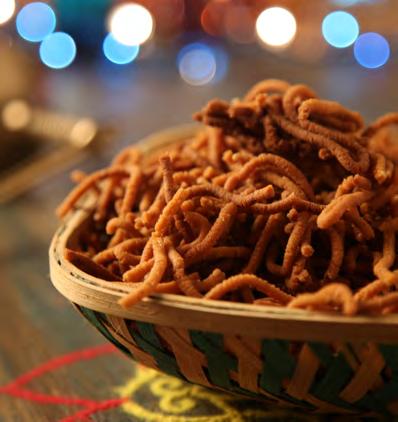

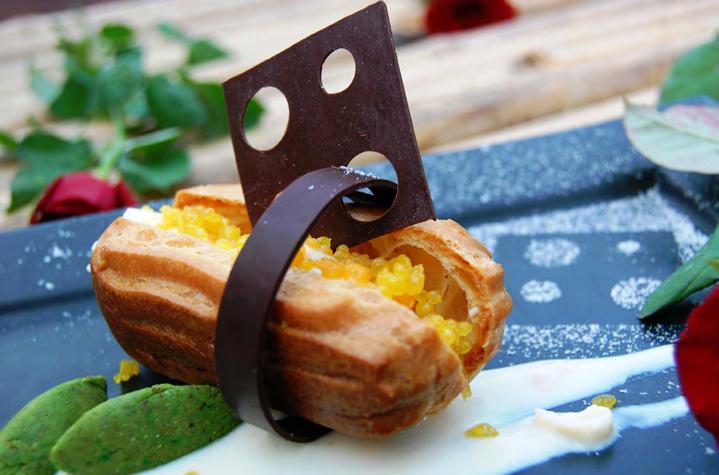
INGREDIENTS
• 125ml Water
• 125ml Milk
• 125gms Butter
• 12gms Caster Sugar
• 165gms All-purpose Flour
• 5 Eggs
• 2gms Salt
DIRECTIONS
1. Heat water, milk, butter, and sugar together and boil.


By Chef Ranveer Brar @ranveer.brar
2. Take the pan off the heat and add the sifted flour and salt.
3. Use a spatula to stir until thoroughly combined.
4. Return the pan to the hob, reduce the heat to low, and continue stirring with a spatula until the dough leaves the sides of the pan.
5. Take off the heat; transfer the dough to a mixing bowl and leave to cool for 2-3 minutes, stirring occasionally.
6. Gradually add the beaten eggs to the dough.
7. Beat with a spatula until the mixture is smooth. The consistency should be neither too soft nor too hard; it should



drop off the spoon, leaving a smooth ‘V’ shape.
8. Pipe into shape and bake at 400°F for 12-15 minutes, then reduce the temperature and let them dry at 350°F.
For Crème Patisserie
INGREDIENTS
• 500ml Milk
• 100gms Sugar
• 120gms Egg Yolks
• Few drops of vanilla essence
• 50gms All-purpose Flour
• 60gms White Chocolate
• 60gms Boondi
DIRECTIONS
1. Add milk and vanilla to a saucepan and bring it to a boil.
2. In a mixing bowl, whisk together the egg yolk and caster sugar. Add the flour and whisk well until smooth.
3. Pour half of the infused milk into the egg mixture and whisk again until there are no lumps.
4. Pass the mixture through a sieve and then return the mixture to the remaining milk in the pan. Continuously whisk the mixture until it comes to a boil.
5. Take the pan off the heat and pour the crème patisserie into a shallow tray. Cover with cling film and cool.
6. Make cylinders using plastic sheets, fill them with this cream, and set them in the freezer to make crème patisserie logs.
To Assemble
1. Spread a thin layer of melted white chocolate on a piece of paper.
2. Sprinkle boondi on the white chocolate layer before it is set.
3. Place the frozen crème patisserie log on this chocolate sheet and wrap.
Refrigerate to set.
4. Slit the éclair and place the set chocolate-coated crème patisserie log in the center.
5. Garnish with shaved chocolate and more boondi.
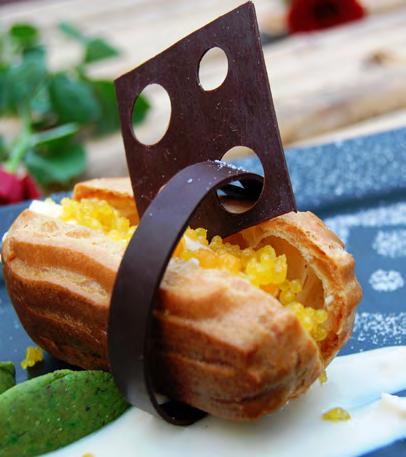


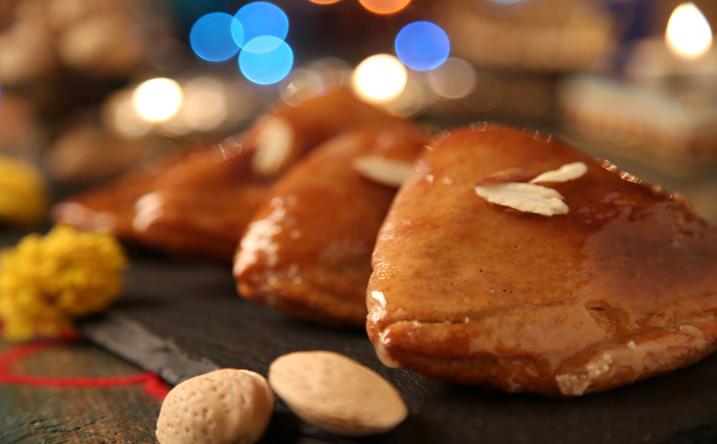
• 1 cup Refined Flour
• 1 cup Almonds, blanched, peeled and dried
• ½ cup Sugar, powdered
• 1 teaspoon Cardamom Powder
• Milk as required
• ¼ cup Honey
• 2 tablespoons chopped nuts (Almonds, Cashew nuts)


By Chef Ranveer Brar @ranveer.brar
1. Preheat the oven to 350°F.
2. Grind the dried almonds to a fine powder in a mixer.
3. In a bowl, add flour, almond powder, sugar, cardamom, and saffron. Mix the dry ingredients well.
4. Combine and knead them into a dough using milk.
5. Divide the dough into small balls and make small puris using a rolling pin.
6. Fold the puri in half and then another half, forming a triangular shape. Roll it out evenly, securing the edges.
7. Place them on a greased baking tray.
8. Bake the puris in the oven for 10-12 minutes. Remove and transfer to serving tray.
9. Drizzle a little honey on it, sprinkle chopped nuts, and serve hot.





By Mrinalini Sundar
Diwali, the festival of lights, is just around the corner. While everyone is already in the festive mood, shopping for their Diwali outfits and redecorating their homes, how we celebrate Diwali has evolved. When you think about Diwali, one of the first things that often comes to mind is how we celebrated it when we were younger. From starting the day with an oil bath and wearing new clothes to bursting crackers, enjoying hearty meals, inviting relatives and friends over, exchanging gifts, and hosting parties—the grand celebrations have changed over the years.
While the enthusiasm to celebrate Diwali in the best way possible remains unchanged, many ancient Diwali rituals have faded away, lost in the hustle of modern life. These traditions, steeped in regional, cultural, and spiritual significance, offer a glimpse into the more intricate, intimate, and community-driven aspects of Diwali. Listed here are some of the ancient traditions that have gradually faded into the background.














While Lakshmi Puja is widely performed during Diwali, many lesser-known rituals dedicated to other deities have faded over time. In West Bengal, Kali Puja, once essential for driving away negative energies before welcoming prosperity, has become less common, though some still observe it.
In Tamil Nadu, families traditionally performed Govardhan Puja, worshipping an earthen mound symbolizing Mount Govardhan. This ritual has mostly disappeared and has now been overshadowed by other Diwali customs.
Similarly, Vishwakarma Puja, a tribute to the divine architect, was once central in artisan communities to bless tools and instruments. Today, it is mainly limited to industrial settings and is far less prevalent among traditional artisans.
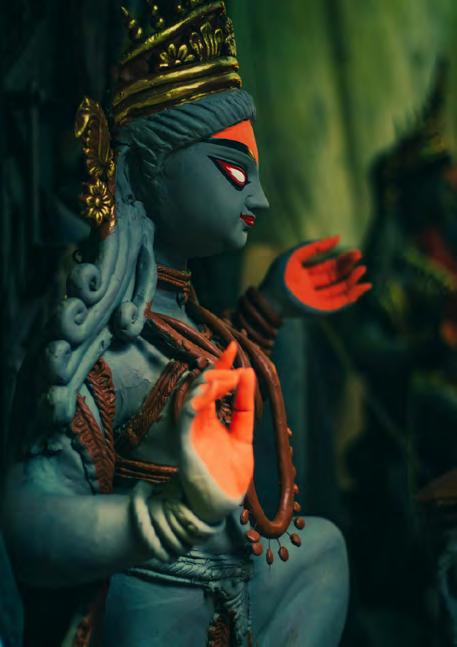
Folk songs, in general, have played a significant role in Indian culture, and Diwali was no different. In ancient
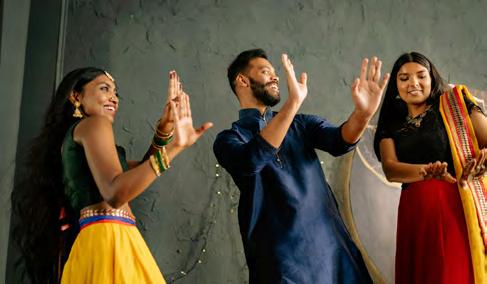
times, Diwali was marked by communal gatherings where ‘Diwali Geet’ were sung to praise deities like Lakshmi, accompanied by instruments like the dholak or mridangam.
In Maharashtra, Diwali Pahat featured early morning concerts, fostering community spirit, but such events are now rare, replaced by modern entertainment. Similarly, in Gujarat and Rajasthan, the traditional slower-paced Diwali Garba dance has shifted towards Bollywood music, moving away from its original songs.
One of the first things that strikes us when we say Diwali is card parties. While card games have become a popular Diwali tradition, particularly in northern India, ancient Diwali celebrations were marked by simpler, more culturally significant games. In many regions, instead of playing cards, people played games of chance with cowrie shells.
In states like Gujarat and Madhya Pradesh, playing with cowrie shells during Diwali was a symbolic practice representing life's unpredictability and fate's role in human affairs. Players would toss shells, predicting their outcome, which was a way of seeking divine blessings for wealth and prosperity. Over time, card games involving money have overshadowed this ancient tradition, leading to the decline of this sacred form of gaming.
What’s Diwali without sweets and savories? Although the festival of lights is synonymous with mithais and namkeen, many regions have unique culinary customs that do not necessarily revolve around sweets.
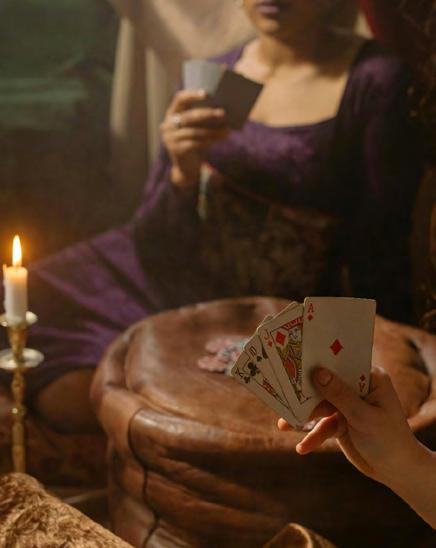

In Kerala and parts of Karnataka, simple, healthy meals were traditionally prepared during Diwali, avoiding rich, decadent sweets. Unique rice dishes, lentil soups, and vegetable curries were the focus, with sattvic food believed to
cleanse the body and mind.
In Rajasthan, some families avoided sweets during Diwali, viewing it as a time for introspection and reserving sweets for New Year celebrations. Today, however, Diwali is all about indulging in sweets and savories.
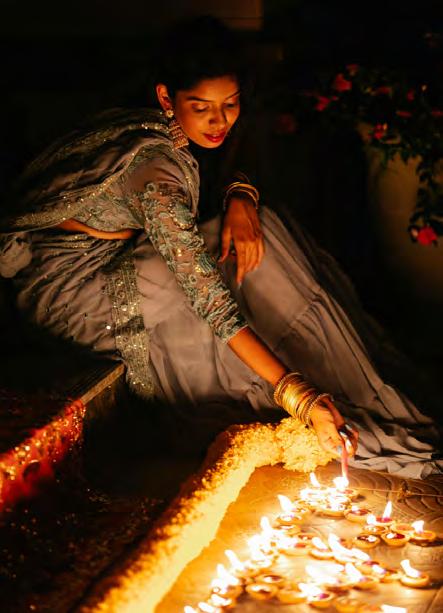
Another tradition that is being largely forgotten is lighting earthen diyas in sacred groves, known as ‘devrai’ in Maharashtra. These groves were considered the abode of local deities, and lighting lamps were believed to invoke their blessings for a bountiful harvest and protection from calamities. This practice, which connected people with nature and their spiritual surroundings, has faded mainly due to urbanization and the destruction of these sacred groves. However, today, most people light diyas in their homes.














As we celebrate Diwali this year with fireworks, sweets, and lights, it is worth pausing to reflect on the rich tapestry of traditions that have faded away. These ancient rituals offered a deeper spiritual connection and fostered community bonding, environmental awareness,


By Naina Grewal

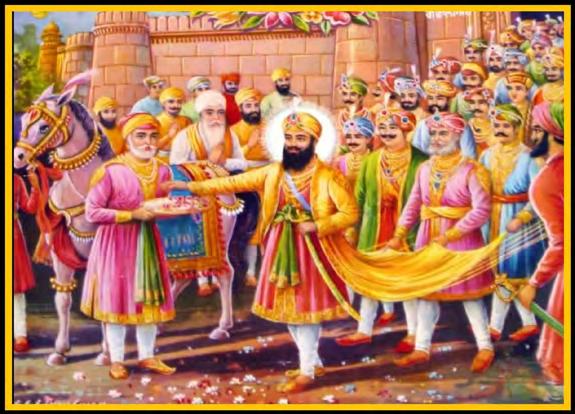
Bandi Chhorh Divas is remembered not only as the day Guru Hargobind Sahib Ji walked free from imprisonment at Gwalior Fort, but as the day freedom itself was redefined. Guru Ji had been detained, in part, because of the growing influence and independence of the Sikh community, which unsettled the Mughal court. Alongside him were fifty-two Hindu kings and princes who had been imprisoned due to political rivalries and suspicions of disloyalty.

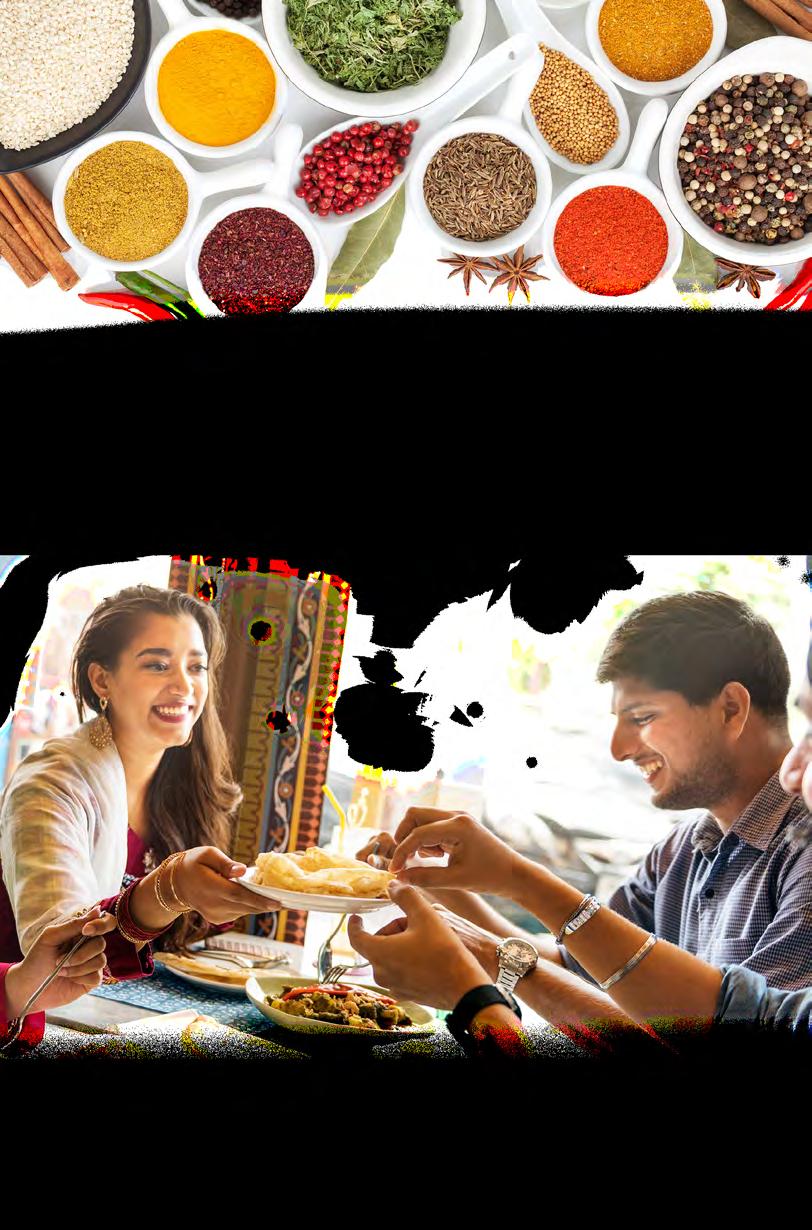
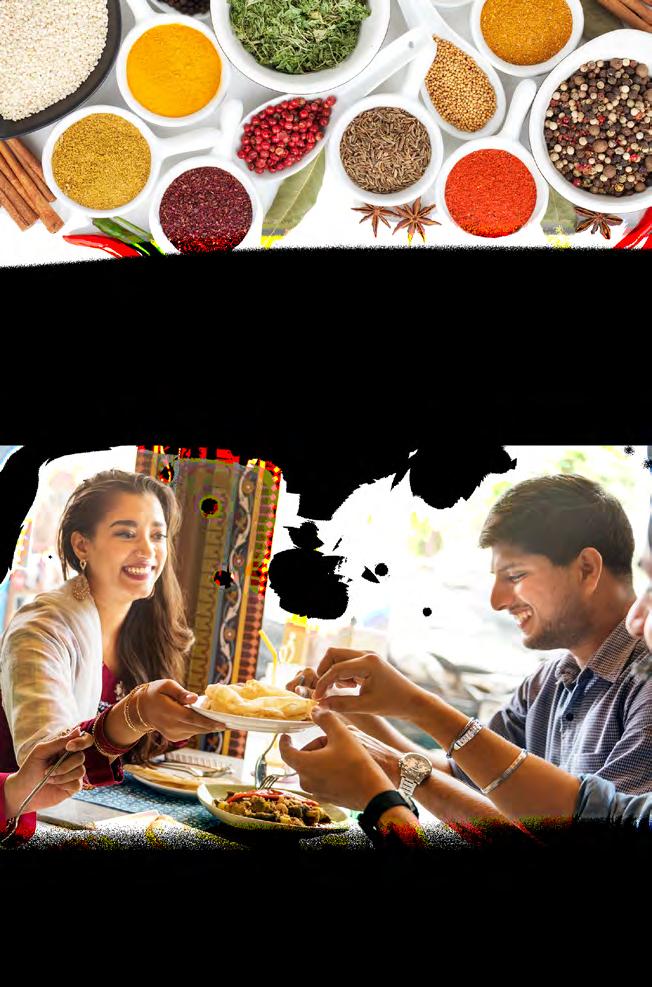

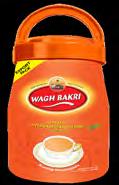


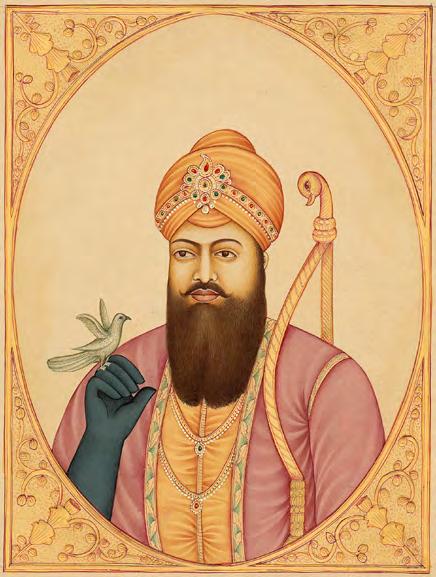
While the emperor agreed to Guru Ji’s freedom, Guru Hargobind Sahib Ji insisted he would not leave unless the fifty-two detained kings and princes were also released. Cunningly, Jahangir set a condition: only those who could hold on to Guru Ji’s cloak during his walk from the fort would be allowed to leave. In response, a special robe was made with fifty-two tassels, each serving as a lifeline for one ruler to hold as they walked out of captivity together. More than a political maneuver, what endures is the image of a garment transformed into a symbol of justice, compassion, and the idea that true freedom is never solitary but shared.
As such, the symbolism of Bandi Chhor Divas extends far beyond the
historical event. Each string can be seen as representing a commitment, a bond, or a cause. Taken together, the cloak reminds us that freedom is not singular. It is multiplied when it is shared, and it becomes sustainable only when communities are lifted together. Modern celebrations of Bandi Chhor Divas carry this lesson into acts of charity and service. Families light candles and join in prayer, but they also organize food drives, langars, donations, and community meals that mirror Guru Ji’s commitment to others.
The fifty-two strings may be interpreted today as reminders of the diverse struggles people face in contemporary life. Some may see them as calls to support social justice movements, while others view them as encouragement to stand with marginalized communities. Each string symbolizes the ties that bind us in responsibility and
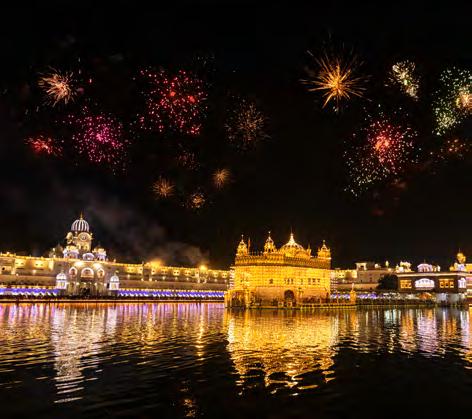

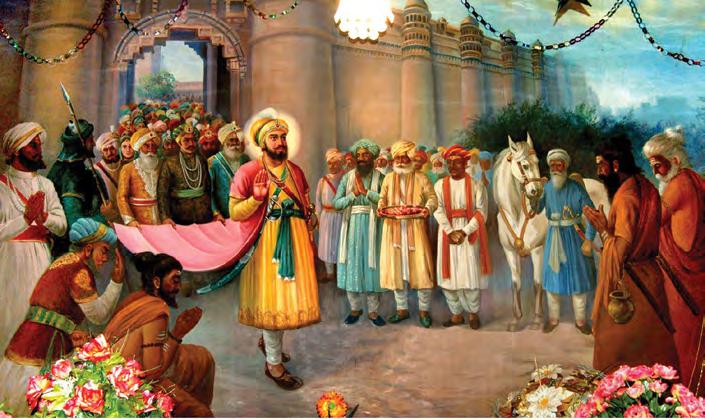
compassion. In this way, the historical act of liberation has evolved into an enduring ethic of solidarity.
Canadian celebrations of Bandi Chhor Divas showcase this symbolism through community gatherings at gurdwaras. Illuminated by
rows of candles, these spaces become centers of reflection and service. Volunteers distribute food to neighbors, regardless of background, demonstrating that the values of the cloak extend beyond the Sikh community. Just as Guru Ji ensured that no ruler was left behind, these observances remind us that society flourishes only when inclusivity is practiced.
The image of the cloak also speaks to leadership. It was not enough for Guru Hargobind Sahib to walk out of prison alone; true leadership meant ensuring that others shared his liberation.
In modern contexts, this resonates with the idea that leaders must carry responsibility for those they guide. The cloak becomes a metaphor for ethical leadership, one that prioritizes justice and collective well-being over personal gain.
In modern times, the cloak’s message feels urgent.
From war zones that displace millions, to the fight for civil rights, to harm as close to our fingertips as cyberbullying, it is tempting to believe these struggles do not touch us and only impact someone else. However, the truth is that injustice anywhere tugs at the strings we all hold. The cloak reminds us that freedom and dignity are never private possessions; they are responsibilities carried together.
Consequently, each string of the cloak is a thread of accountability. Whether interpreted spiritually, socially, or personally, the message is clear: freedom is incomplete when others are left behind. By celebrating Bandi Chhor Divas, communities affirm a commitment to walk together, bound by ties of justice and care. The cloak of fifty-two strings is not a relic of the past; it is a living metaphor that continues to inspire.




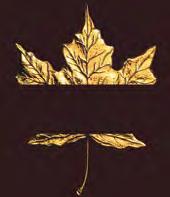





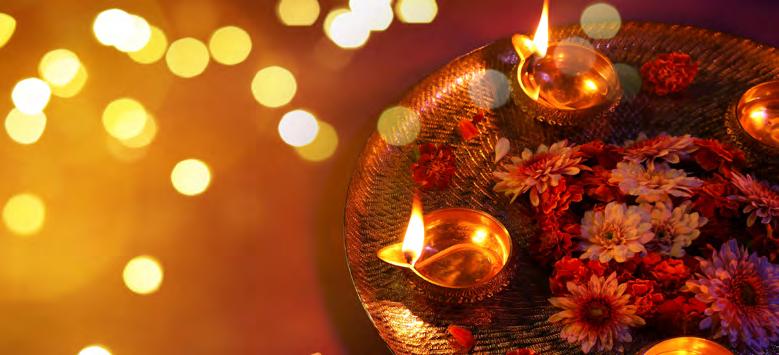
Diwali, the Festival of Lights, is one of those times of year that truly warms the heart. Homes sparkle, sweets fill every table, and there’s laughter in the air. But beyond the beautiful diyas and celebrations, Diwali also brings with it a gentle reminder of what truly matters—light over darkness, love over ego, and community over isolation. of and
By Ancy Mendonza

As we prepare our homes and hearts for the festivities, it’s worth pausing to reflect on the lessons Diwali quietly teaches us, lessons that stay long after the candles go out.
At its core, Diwali celebrates hope. It reminds us that even in the darkest times, light will always find a way through. Whether it’s overcoming a personal struggle, helping someone in need, or simply choosing to stay kind in a world that can sometimes feel unkind, that’s the true essence of Diwali. Every flicker of a diya is a small but powerful
symbol of positivity—a reminder that goodness always prevails.
It’s also a time when families come together, and that togetherness feels especially meaningful in today’s fastpaced world. Preparing sweets, decorating homes, sharing laughter—these simple acts connect generations. They remind children of their roots and bring elders the joy of seeing traditions continue. Diwali is about belonging, and about reminding each other that no matter where life takes us, home is the
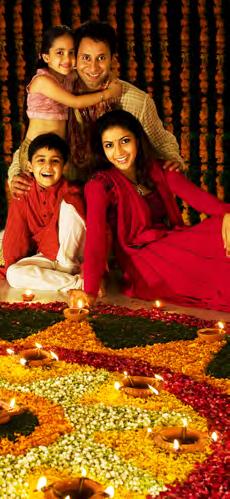











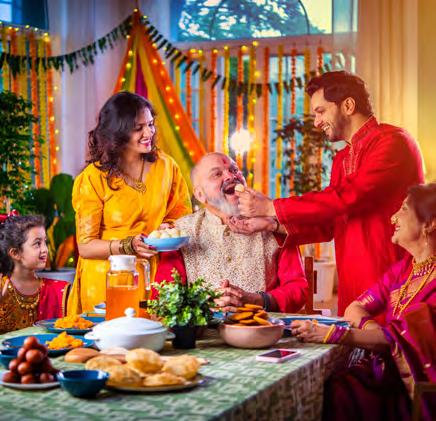
people we love. The festival also inspires kindness. Every act of giving, whether it’s sharing food, donating to those less fortunate, or just being there for someone— adds to the collective brightness of the season. The joy of Diwali isn’t only in receiving but in giving with a full heart. It’s in lighting someone else’s day, in the same way a single lamp can light many others without losing its own glow.
More than ever, Diwali is also about mindfulness. In the excitement of fireworks and parties, there’s a growing awareness to celebrate responsibly—to choose eco-friendly lights, avoid excess, and remember that the truest light is one that doesn’t harm the
world around us. A quieter, greener Diwali is just as meaningful — and perhaps even more beautiful.
touch, its own story, yet we all come together under the same radiant glow of Diwali lights.
This year, as we celebrate, let’s take a moment to appreciate the light within and around us — the friendships, the laughter, the resilience, and the simple joys that make life bright. Diwali is not just a festival; it’s a feeling —one that invites us to start fresh, spread kindness, and carry the warmth of its message long after the last sparkler fades.
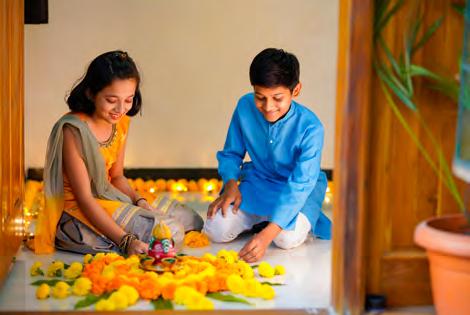
And while the festival may look different across regions and cultures, its essence remains the same a celebration of renewal and positivity. That diversity is something to cherish. Each community adds its own

Here’s to lighting up our lives, and others’ with love, gratitude, and hope. Happy Diwali from all of us at DARPAN.






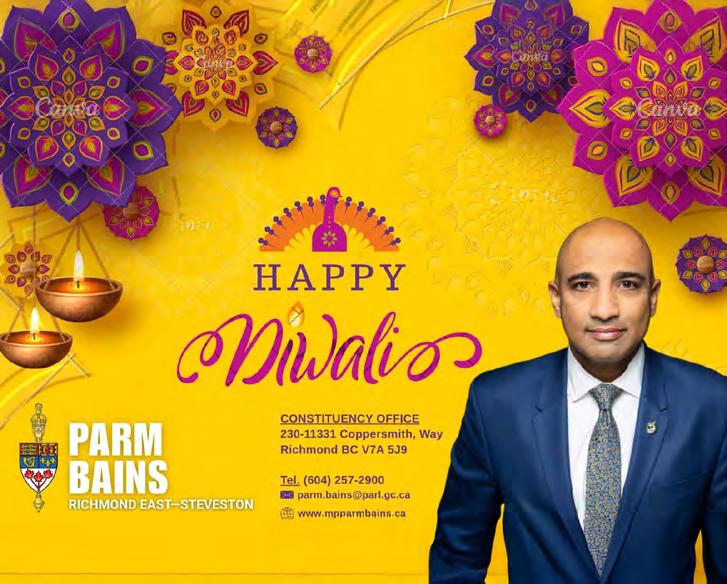


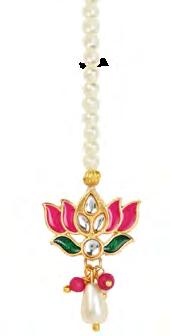

Diwali has always been a season of shimmer and symbolism of ritual and reinvention. But this year, beauty is no longer just an accessory to the celebration. It’s a powerful medium for intention, protection, and cultural storytelling.
Enter “Nazar Na Lage” Glam, a movement that’s turning centuries-old South Asian symbols into bold, beautiful statements across nails, eyes, and accessories. Each detail carries meaning, but together, they create a look that’s deeply personal and unapologetically modern.

By Natasha D'souza

This isn’t nostalgia in makeup form. It’s a playful, stylized homage that transforms ancient iconography into wearable art. Here are five standout ways to bring the Nazar Na Lage aesthetic into your beauty ritual this Diwali.

The evil eye, or nazar battu , has long been believed to shield against envy and negativity, and now it’s taking center stage in eye makeup. The classic wing is getting a protective twist: electric-blue liners traced into nazar-inspired shapes, sapphire gemstones placed at the outer corners, or floating dots along the crease to mimic the protective amulet’s gaze.
For the bold, graphic shapes inspired by Turkish beads or buri nazar charms that are round, concentric rings of deep blue, white, and black make for statement festival looks. For the minimalist, a single micro-crystal placed under
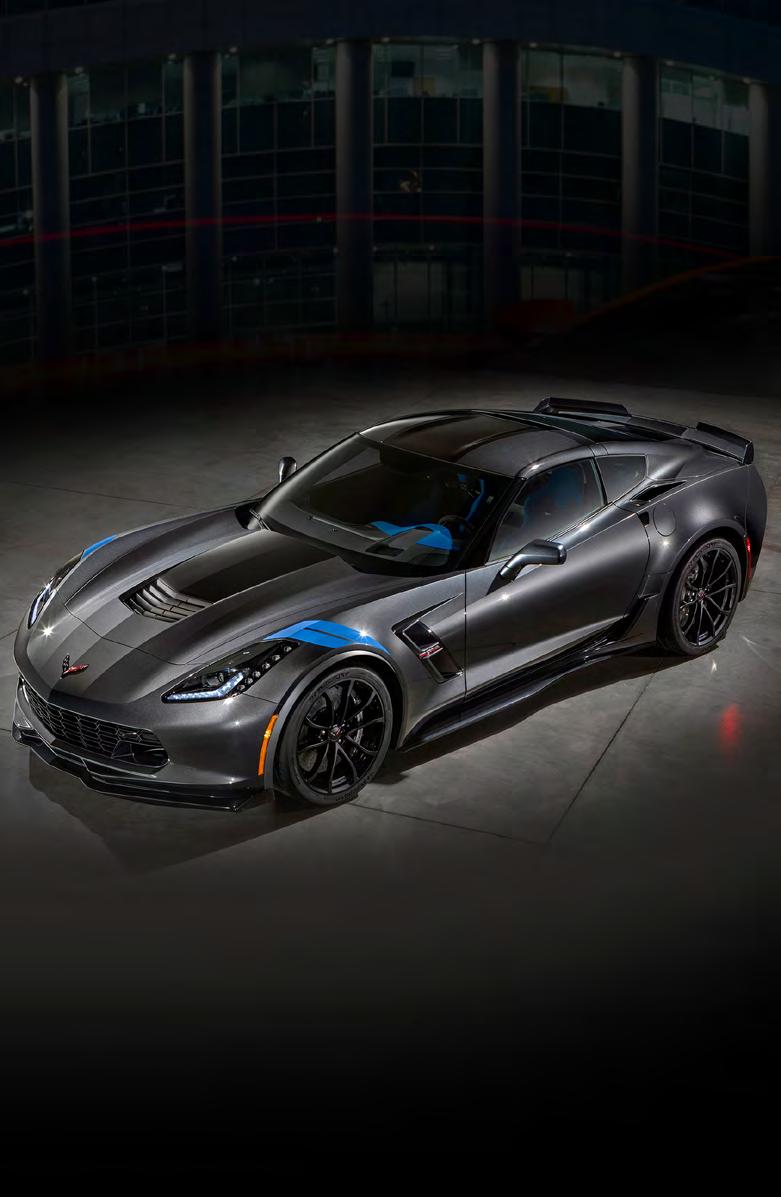




the lower lash line is a subtle yet powerful talisman. Either way, the result is striking: a look that doesn’t just frame your eyes but fortifies them.
or lotus petals. Intentional contouring frames eyes and brows, enhancing talismanic liners or peacock-inspired shadows. Even traditional rangoli patterns are being adapted into face gems and decals, turning makeup into
wearable festival art. These designs feel especially modern when paired with minimalist bases; think barely-there foundation, brushed brows, and bold, symbolic detailing stealing the spotlight.
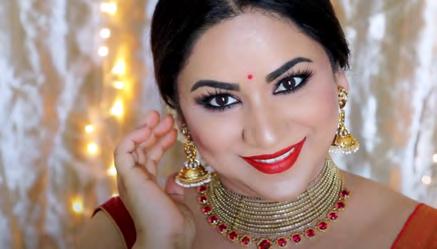

Beyond the evil eye, South Asian visual language is filled with powerful symbols, and they’re making their way into beauty in more intricate ways. Mandalainspired shadow looks use precise dots and concentric patterns to mirror the meditative symmetry of sacred art. Diya flames are reimagined in ombre liners that transition from copper to ember orange, or in negative-space shapes glowing above the brow bone.
In Nazar Na Lage glam, the face is a canvas for symbolism and celebration. Dewy, luminous skin sets the stage for metallic or pastel motifs along the cheekbones, temples, and forehead, echoing mandalas
This season’s manicures are storytelling in miniature. Evil-eye dots on nude nails, lotus petals outlined in gold foil, or temple bell silhouettes at the tips, each design fuses spirituality with style. Intricate mehndiinspired swirls over deep maroon or saffron bases make for a contemporary twist on tradition.
One standout trend: Shakti talon art, a maximalist style layering protective symbols like mango leaves (toran), trishul shapes, or chakra wheels across long, almondshaped nails. Pair with stacks of bangles and gold hand jewelry for a fullcircle festive statement.
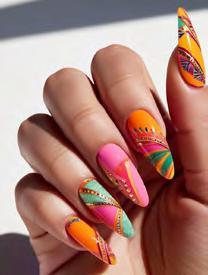
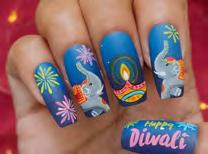


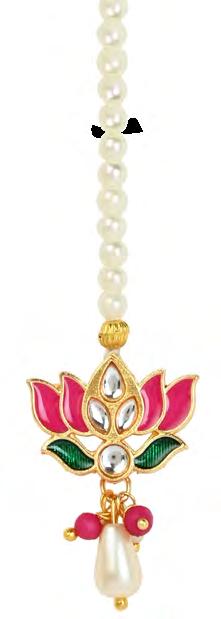
No Diwali beauty story is complete without finishing touches, and this year, accessories are part of the protection-meets-glamour narrative. Hairpins shaped like nazar amulets tucked
into sleek buns, lotus-shaped maang tikas worn with contemporary outfits, or jhumkas carved like diyas, the line between beauty and jewelry is beautifully blurred.
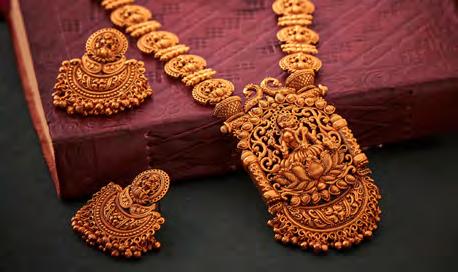
What makes Nazar Na Lage Glam more than a trend is the duality it holds: part sacred, part statement. These motifs aren’t just aesthetic choices. They’re affirmations, each with centuries of mythology and meaning woven into them. This Diwali, beauty isn’t just about how you look; it’s about what you carry with you. Power. Protection. Story. And a reminder that style, when rooted in culture, is its own kind of magic.
and




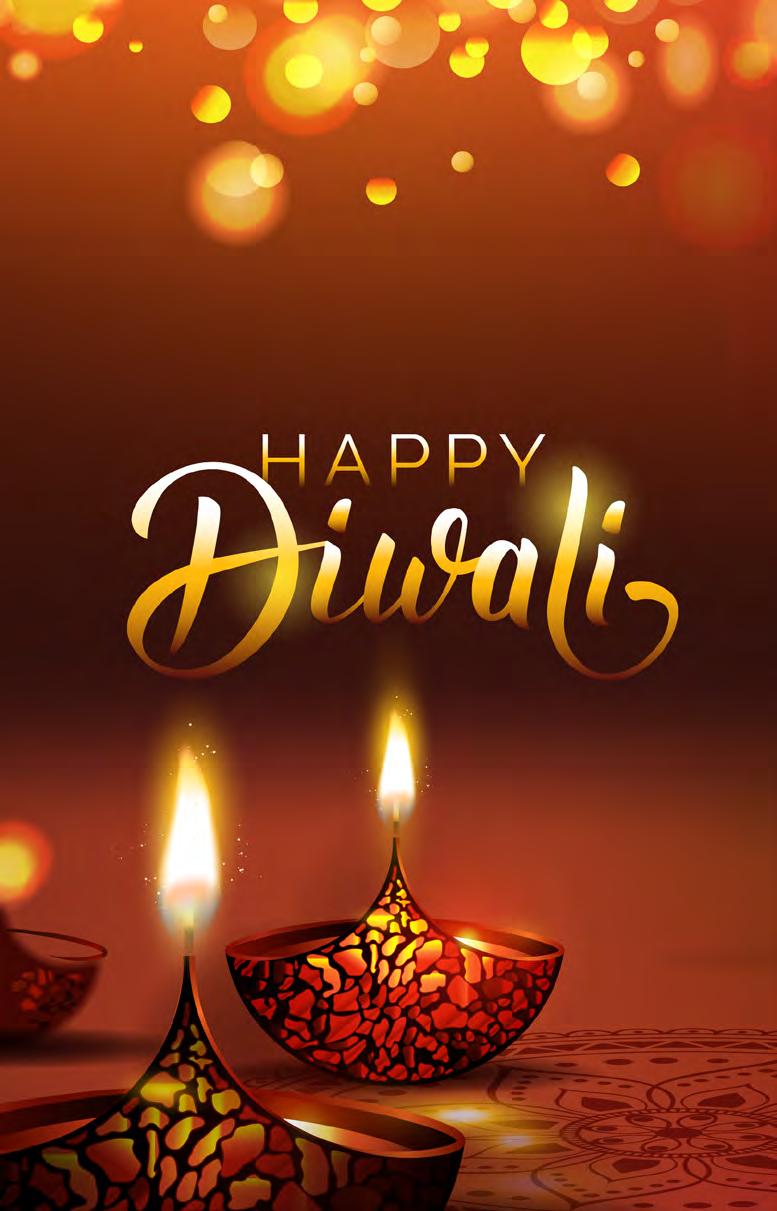
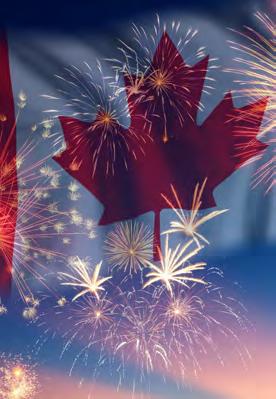

By Naina Grewal

A Diwali road trip across Canada is not just about moving through geography; it is about tracing stories of migration, resilience, and celebration. From the coastal rains of British Columbia to the crisp chill of the prairies and the golden autumn skies of Ontario, each stop reveals how South Asian communities have lit up the Canadian landscape for more than a century

Where History Meets the Coast Vancouver & Surrey, British Columbia
British Columbia holds some of the earliest Sikh landmarks in Canada. The first gurdwara was built in Golden in 1905, followed by Abbotsford’s gurdwara in 1911, now North America’s oldest surviving gurdwara and a National Historic Site. A few years later, the Paldi gurdwara rose in the mill town of Paldi, a rare multicultural settlement of its time, symbolizing both resilience and welcome.

Vancouver also bore witness to the Komagata Maru incident of 1914, when a ship of South Asian passengers was denied entry, underscoring the struggle for belonging.
Over time, that struggle gave way to cultural vibrancy. Vancouver’s Punjabi
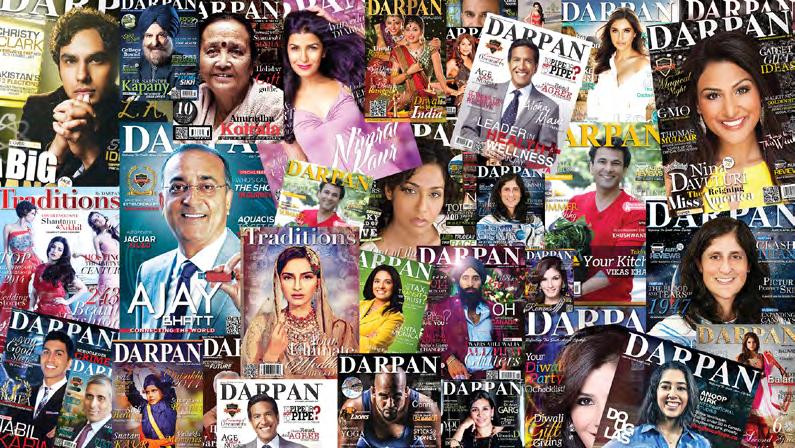
Market, founded in 1970 as North America’s first South Asian district, still glimmers with saris and sweets during Diwali. In Surrey, the Payal Business Centre buzzes with shoppers as fireworks crackle overhead and lines spill onto the sidewalks. Even autumn rains add to the glow, lanterns and diyas shimmering across wet pavements.
Calgary & Edmonton, Alberta
The prairies first drew South Asian workers in the early 1900s, many working along railway lines or in mills and farms. Over decades, these communities built cornerstones of faith: Calgary’s Dashmesh Culture Centre, established in 1984 and now one of the largest gurdwaras in North America, and Edmonton’s Nanaksar Gurdwara, a place of gathering and spiritual strength.
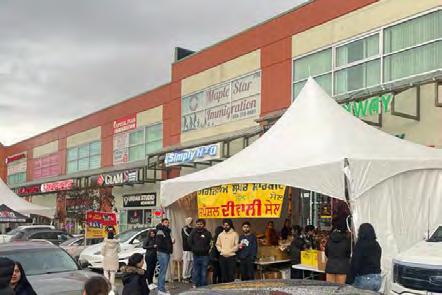
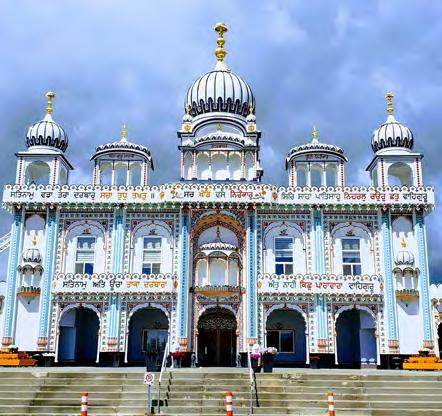
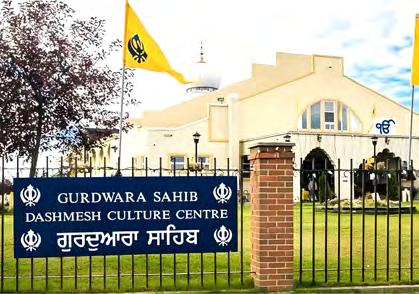
Diwali here feels as wide as the prairie skies. Strings of lights glow against October’s chill while fireworks crackle across the horizon. Inside, families gather for Lakshmi Puja, kitchens fill with pakoras and laddoos, and dhol beats carry through community halls. The cold makes every diya and sparkler shine brighter—a testament to warmth pushing back against the prairie wind.


Toronto & Brampton, Ontario
Ontario carries milestones of commerce, visibility, and scale. In the 1970s, Gerrard India Bazaar emerged as one of the oldest South Asian marketplaces in North America, and it still draws Diwali crowds to glowing shopfronts and sweet stalls. In Brampton, sometimes called the Punjabi capital of Canada, the Ontario Khalsa Darbar anchors one of the largest Sikh congregations
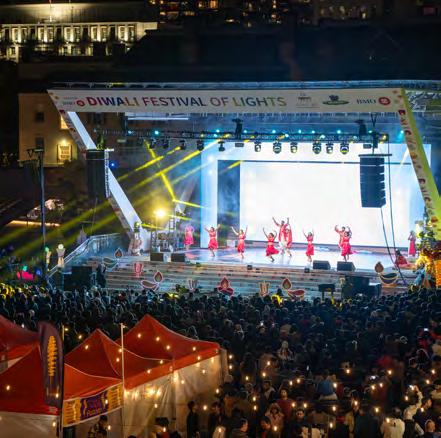

outside India. Today, the Greater Toronto Area transforms into one of the most vibrant Diwali regions in the country, where plazas blaze with light and entire neighborhoods join in the festival.
Here, the October air is crisp, creating the perfect backdrop for street festivals and late-night gatherings. Neon signs
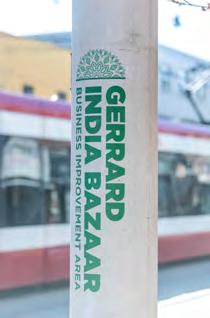
mingle with flickering diyas, shop windows overflow with rasgullas and thalis , and Brampton temples echo with devotional music as families pour in to celebrate. The energy of Ontario’s Diwali is unmistakable: festive, multicultural, and embedded in the mainstream rhythm of Canada’s largest city.













■ PERSONAL INJURY / ICBC CLAIMS
■ PERSONAL INJURY / ICBC CLAIMS
■ RESIDENTIAL / COMMERCIAL REALESTATE
■ RESIDENTIAL / COMMERCIAL REALESTATE
■ PERSONAL INJURY / ICBC CLAIMS
■ CORPORATE / COMMERCIAL LAW
■ CORPORATE / COMMERCIAL LAW
■ RESIDENTIAL / COMMERCIAL REALESTATE


■ WILLS & ESTATES
■ WILLS & ESTATES
■ CONTRACT DISPUTES
■ CONTRACT DISPUTES
■ WILLS & ESTATES
■ COMMERCIAL LITIGATION
■ COMMERCIAL LITIGATION
■ CONTRACT DISPUTES
■ TRUST & SHAREHOLDER'S AGREEMENTS
■ TRUST & SHAREHOLDER'S AGREEMENTS
■ CORPORATE / COMMERCIAL LAW
■ TRUST & SHAREHOLDER'S AGREEMENTS
■ BUYING / SELLING BUSINESSES
■ BUYING / SELLING BUSINESSES
■ PROPERTY SUB-DIVISIONS
■ PROPERTY SUB-DIVISIONS
■ BUYING / SELLING BUSINESSES
■ PROPERTY SUB-DIVISIONS


BUILDER'S LIENS COLLECTIONS
■ BUILDER'S LIENS
■ COMMERCIAL LITIGATION
■ COLLECTIONS
■ BUILDER'S LIENS
GENERAL LITIGATION
■ GENERAL LITIGATION
■ COLLECTIONS
■ FAMILY LAW

LITIGATION









Each stop on Canada’s Diwali road trip adds its own burst of light and color. That said, each city’s people form a shared narrative of joy and endurance. Together, the celebrations tell a larger story: of South Asian communities who carried their traditions across oceans, planted them in Canadian soil, and lit them up for all to share.
While this road trip touches only a few provinces, Diwali is celebrated in countless other corners of Canada, too—sometimes with grand fireworks, sometimes
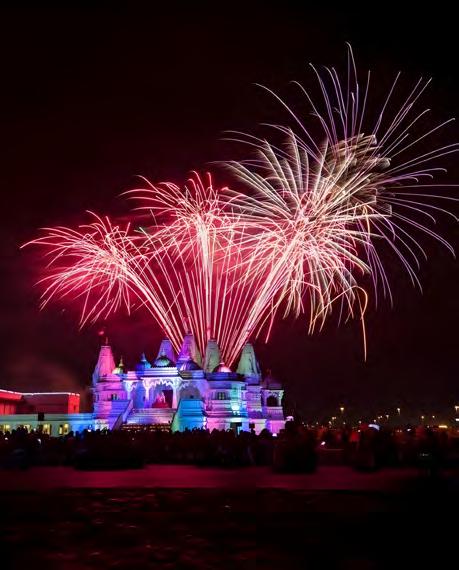
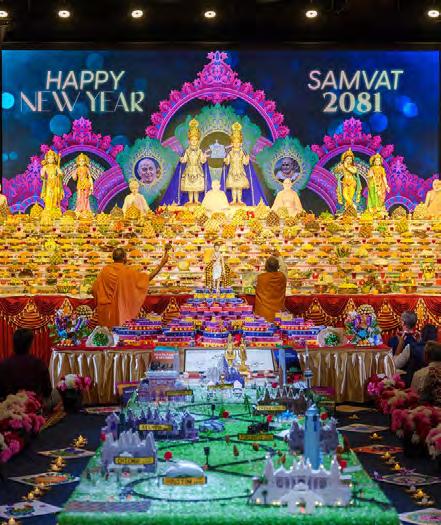
with quiet prayers at home, sometimes through community fairs or classroom lessons. Beyond Hindu and Sikh traditions, Jains and Buddhists also bring their own meanings to the festival, reminding us there is no single way to mark the season of light. The road itself becomes illuminated, not just by fireworks or candles, but by the enduring presence of South Asian heritage woven into Canada’s fabric.

By Natasha D'souza
ot every Diwali looks like the movies with sprawling terraces, elaborate rangolis, and a hundred diyas glowing in a courtyard. For students juggling classes, new immigrants setting up their first homes, or anyone whose address reads ‘cozy studio,’ the festival of lights often unfolds in compact spaces. But here’s the real magic: Diwali was never about scale—it’s about spirit. And with a dash of creativity, even the smallest apartment can feel deeply festive, beautifully intentional, and Instagram-worthy.
Fairy lights are a Diwali staple, but they don’t have to be basic. Create a ‘light wall’ by shaping them into a diya, lotus, or a Sanskrit symbol, metamorphosing it into an instant focal point and perfect photo backdrop. Or layer warm-toned string
lights with mini lanterns in glass jars to add depth and glow without cluttering precious surfaces. Bonus tip: neon LED signs with playful phrases like ‘Let There Be Light’ or ‘Good Vibes Only’ bring a modern, Gen Z twist to tradition.
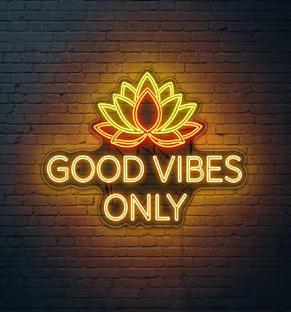
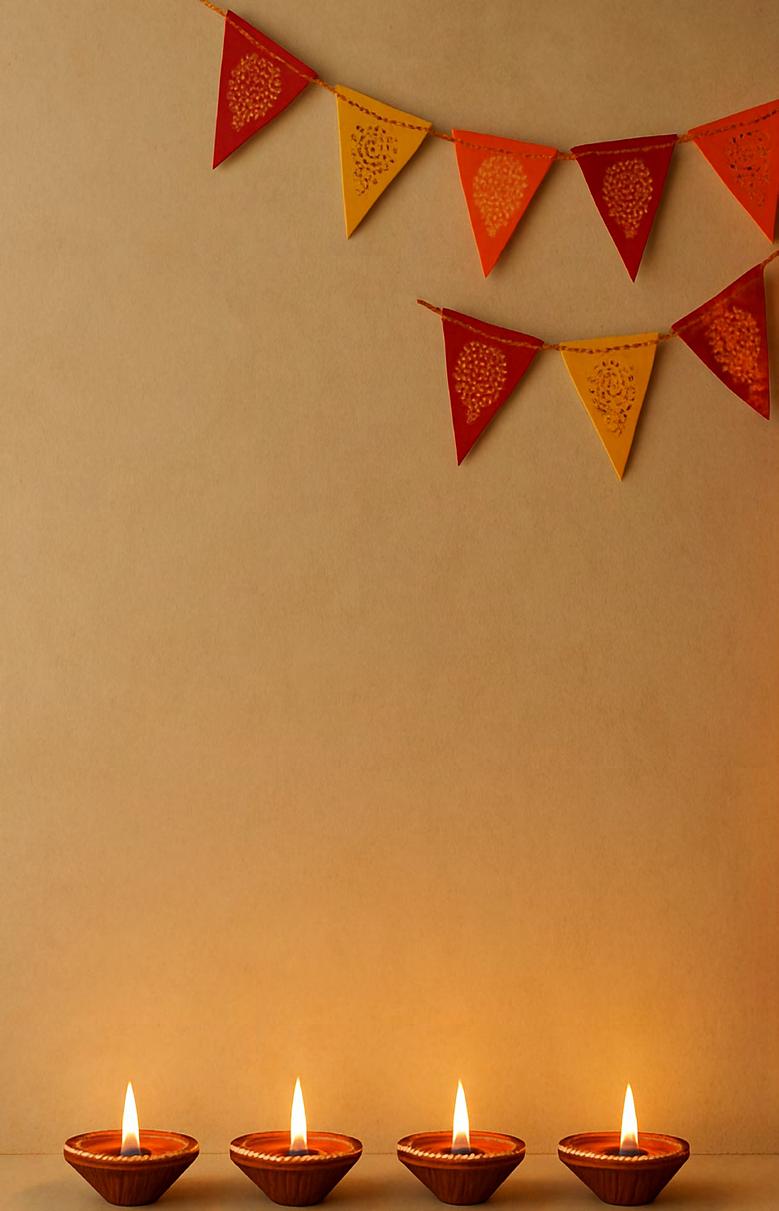






When floor space is limited, go vertical. Think peel-and-stick rangoli decals for windows, floating shelf altars for your puja setup, or ceiling-hung torans that frame a room beautifully without taking up space.
Another clever hack? Floating mandala plates, lightweight paper or fabric hangings that sway gently in the air, creating a dreamy, festive ambiance.
You don’t need a grand mandir to invite positive energy into your home. A corner shelf or even a tray on your desk can become a sacred space with a diya, a sprig of fresh flowers, and a small idol. Want to make it more meaningful? Add a digital frame that cycles through family photos or images of past Diwalis for a thoughtful nod to home that feels comforting and nostalgic, no matter where you are.
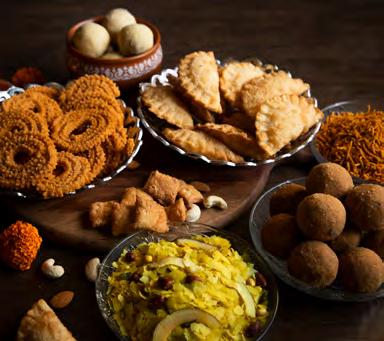
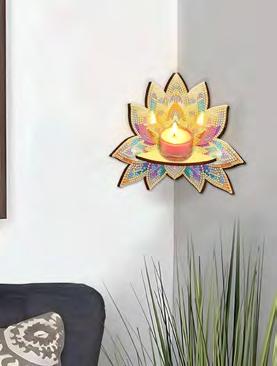
Forget the pressure of hosting a huge dinner! A curated snack station can feel just as festive. Think mason jars of mini mithai, chai served in mixed-and-matched cups, or even fusion nibbles like cardamom brownies and masala popcorn. A DIY mithai tasting board not only looks chic but also doubles as a conversation starter when friends drop by.

Every surface in your home can pull double duty during Diwali. Window sills can hold diyas or floating candles, bookshelves can double as marigold garland holders, and a coffee table can transform into a festive centerpiece with a mirror tray, petals, and tealights. Add a memory garland—a string of Polaroids from past celebrations for a personal, heartwarming touch.

In the age of digital connection, celebration doesn’t have to be physical.

Create a simple Diwali photo nook with a thrifted sari backdrop,

flowers, and fairy lights, perfect for selfies, video calls, or virtual pujas with family back home. Even if you’re continents apart, shared rituals and real-time connections make the space feel instantly warmer.
Because here’s the truth: Diwali isn’t measured in square footage, but it’s measured in moments. It’s in the string lights that flicker across your rented window, the mithai shared with flatmates, the diya you light over a video call with family. Whether your home is 400 square feet or a mansion, the festival’s spirit shines just as bright, proving that joy, like light, expands far beyond the space it’s given.



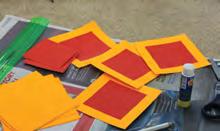

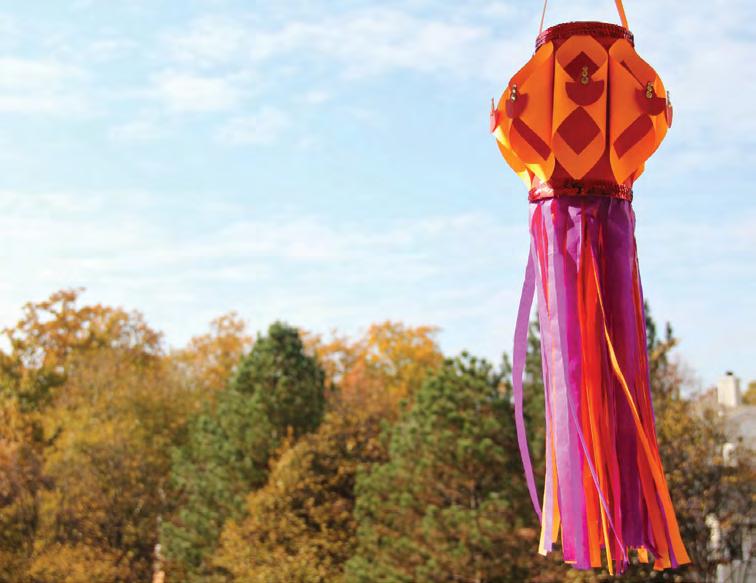
STEP 1: Cut out a 7 by 14 inch rectangle of coloured cardsheet. Make it into a cylinder shape and stick the ends together.
STEP 2: Then, for the cut-outs to be pasted on the cylinder, cut out cardsheet squares of size 4.5 inch. You will need at least 10-12 squares for the lantern.
STEP 3: Stick together the opposite corners of the square sheets, overlapping the corners. Then, leaving a gap of at least 0.35 inch from the top and bottom edges, stick the squares on the cylinder next to each other till the cylinder is completely covered.
STEP 4: For the base strips, use butter paper/tracing paper that is about 14 inch wide and 11-15 inch long, depending on how long you want the strips. Cut the strips leaving about 0.5-0.75 inch on top.
STEP 5: Stick the strips to the cylinder by applying glue to the top edge. To give the lantern a more finished look, stick a colourful or sequin strip on the top and bottom edge of the cylinder.
STEP 6: You can decorate the lantern further by adding colourful cut outs of either flowers, moons or other designs on the overlapping ends of the square.
STEP 7: Lastly, attach a string at the top to hang the lantern from.

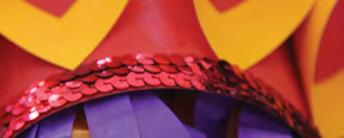












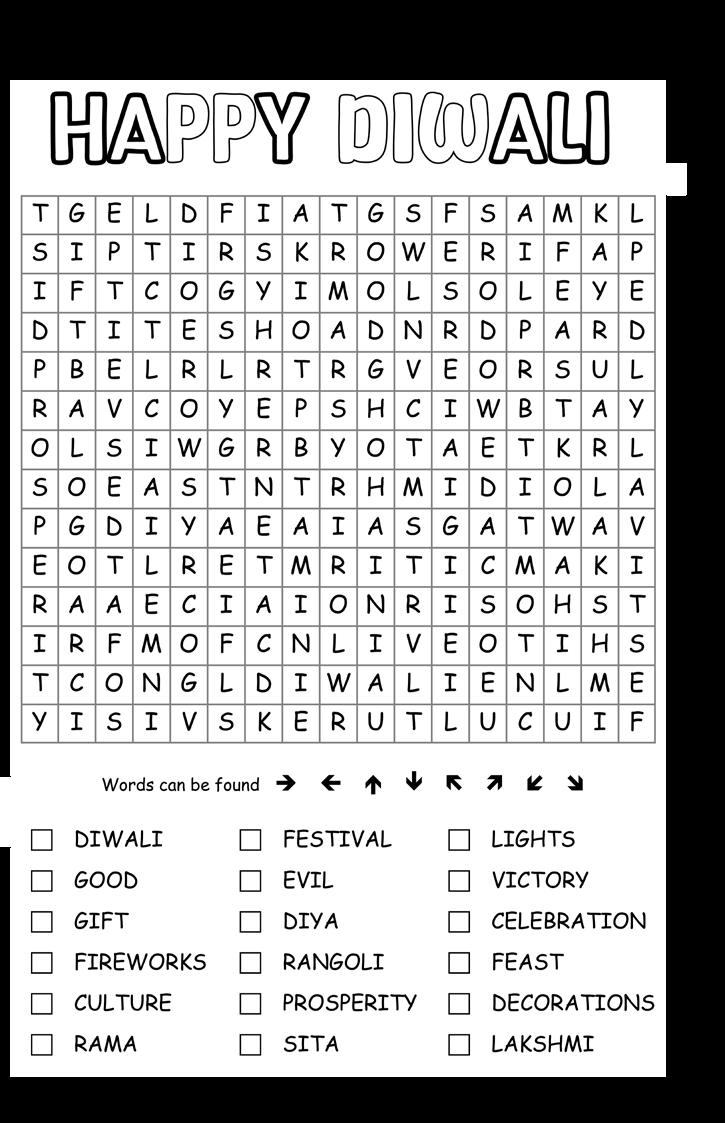

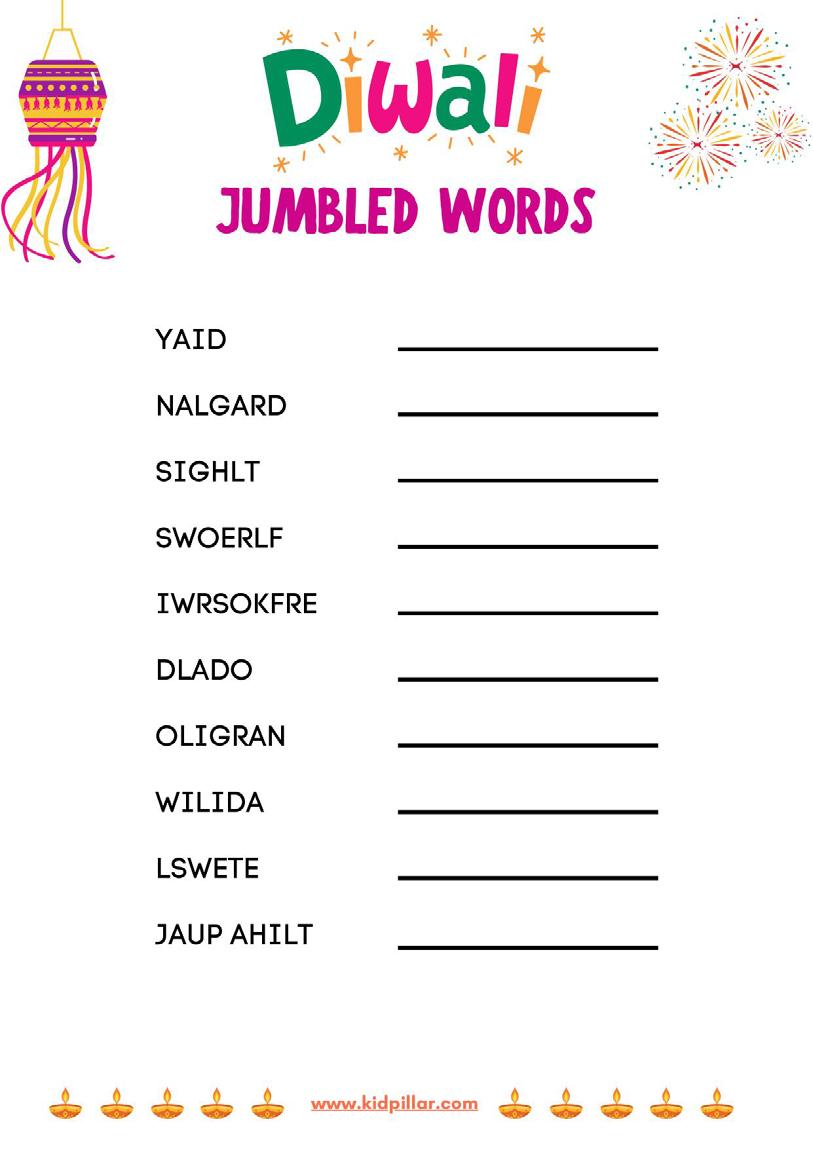

















[2] Floral decorations commonly used during Diwali
[2] Floral decorations commonly used during Diwali
[4] This festival marks the victory of good over ...
[4] This festival marks the victory of good over ...
[5] Diwali commemorates the victory of Lord Rama over this demon king
[5] Diwali commemorates the victory of Lord Rama over this demon king
[7] Five-day Diwali festival begins with this day
[8] Hindu goddess of wealth and prosperity
[7] Five-day Diwali festival begins with this day
[8] Hindu goddess of wealth and prosperity
[10] The festival celebrates Lord Rama's return to this kingdom after exile
[11] Oil lamps used to light homes and temples during Diwali
[10] The festival celebrates Lord Rama's return to this kingdom after exile
[11] Oil lamps used to light homes and temples during Diwali















[1] Symbolic patterns made on the floor during Diwali

[1] Symbolic patterns made on the floor during Diwali
[3] Another name for Diwali, meaning "row of lamps"
[3] Another name for Diwali, meaning "row of lamps"
[6] Diwali is associated with this Hindu epic that tells the story of Lord Rama
[6] Diwali is associated with this Hindu epic that tells the story of Lord Rama
[9] Traditional spherical sweet, exchanged during Diwali
[9] Traditional spherical sweet, exchanged during Diwali























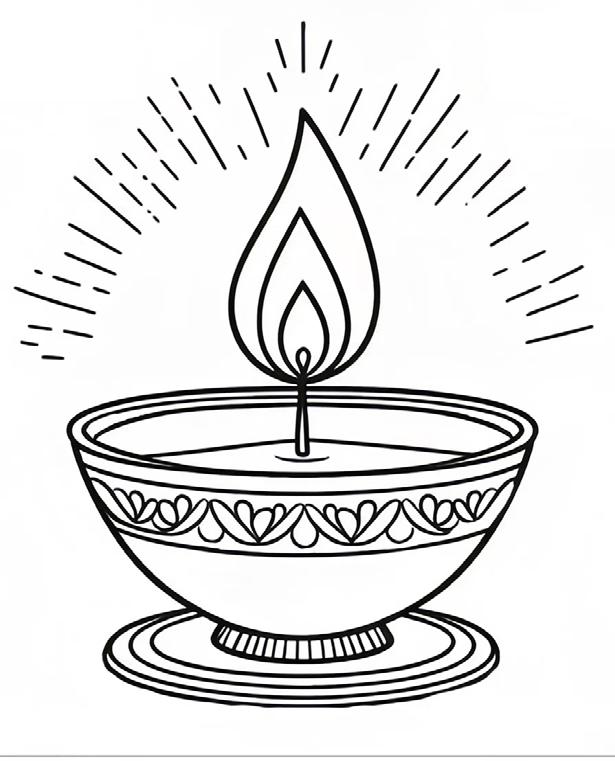

Kids age 12 and under are invited to participate in DARPAN’s Diwali contest.
You can simply take a picture of the artwork and send it to info@darpanmagazine.com OR mail it to - 340-8140, 128th St. Surrey, BC, V3W 1R1. Winners will receive a special Diwali gift.
Hurry, send your entries soon!!!






